A-Z of Car Stuff
This is one in a series of posts on cars, drivers, designers etc. that have interested me over the years. I’ve bored my family and friends with this stuff for years – now it’s your turn!
See A-Z of Car Stuff page for more posts in this series.
Finally! – A Cobra Post
I’ve been planning to compose a Cobra post for a very long time but I was finally spurred into action by the announcement that in 2021, AC Cars will build a limited production run of new Cobras.
Hooray you shout ……… until you read the small print. The new cars will be powered by either a 308hp electric motor or by a 345hp turbocharged 4-pot internal combustion motor.
Sorry, I’m afraid I just can’t get my head around this. The key distinguishing characteristic of the Cobra is, and always has been, its Ford V8 engine. Even the plethora of Cobra replicas have almost all used a V8 motor of some description so I just have to ask WHY???
I know we have to reduce dependency on fossil fuels to save the planet and car manufacturers are obliged to eventually switch (sorry) to fully electric power but I really don’t understand the electric conversion of classic cars movement.
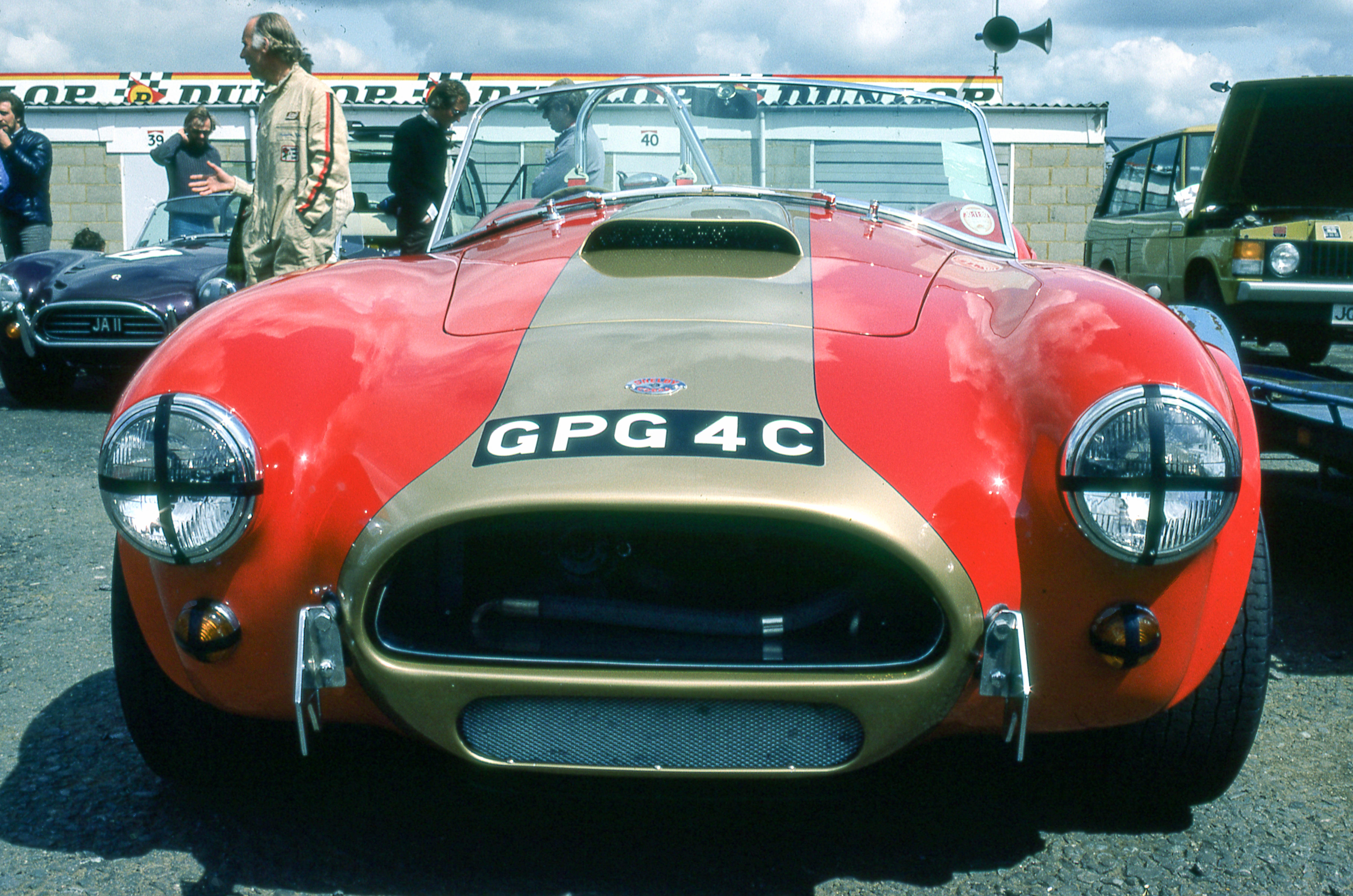
One could argue that the electrification of classics is an inexorable step towards retrofuturism as seen in the 1977 film Gattaca which featured supposedly electrified classic cars from the ’50s, ’60s and ’70s including a couple of Rover P6’s, an Henri Chapron DS19 Decapotable, a Citroen DS21, a Jensen Interceptor, a MKII Jag, a Volvo 1800E, a Studebaker Avanti, a Lincoln Continental and a Buick Riviera.
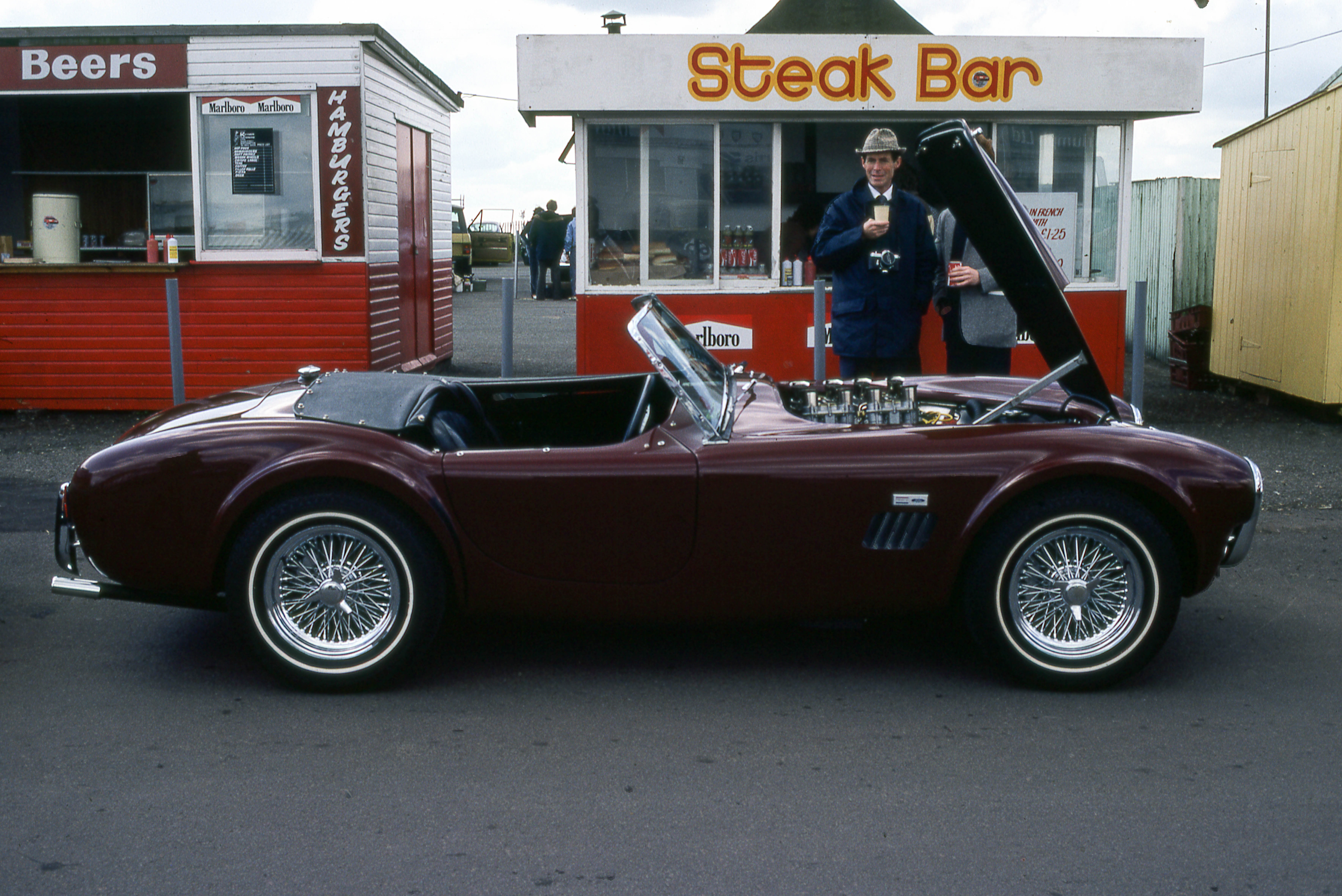
I assume all of these models and many more are now prime candidates for real as opposed to film fantasy electrification now but why would AC want to construct a brand new car looking externally identical to their original ’60s Cobra design with an electric motor? What on earth is the correct term for this? Neo-retrofuturism, post-retro-modernism? Discuss! Then see my upcoming post: “Frankenstein Electrified Classics or The Modern Automotive Prometheus”.
Who made the Cobra?
Good question, I’m glad you asked. Original Cobra’s were built by AC Cars based in Thames Ditton in the UK and by Shelby American in the USA. Rather confusingly car assembly was carried out on both sides of the Atlantics with body/chassis units built in the UK and engine installation in the USA but complete cars were also constructed at both locations. This means that some people regard the Cobra a entirely British car whilst others regard it as an all American creation. The truth is somewhere in between.
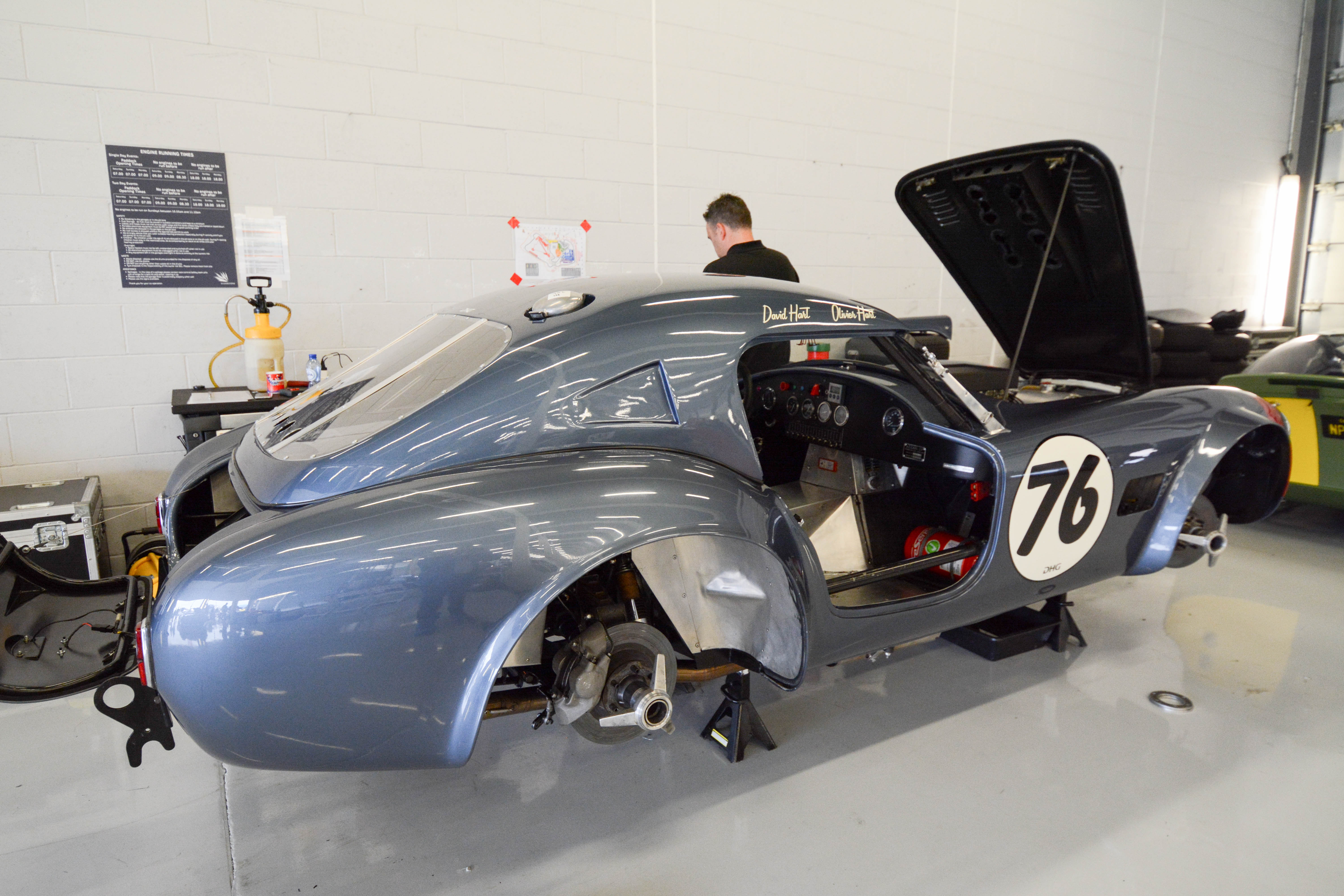
In addition to original/authorised manufacturers who have regularly indulged in continuation runs of the Cobra and some spin-off models such as the Cobra Daytona Coupe, there has also been a worldwide plethora of Cobra Replica manufacturers including Autocraft, Dax, Gardner Douglas, Pilgrim, Python and many, many more. The most importing thing to note is that the Cobra originated in one of the UK’s oldest car manufacturers – AC Cars.
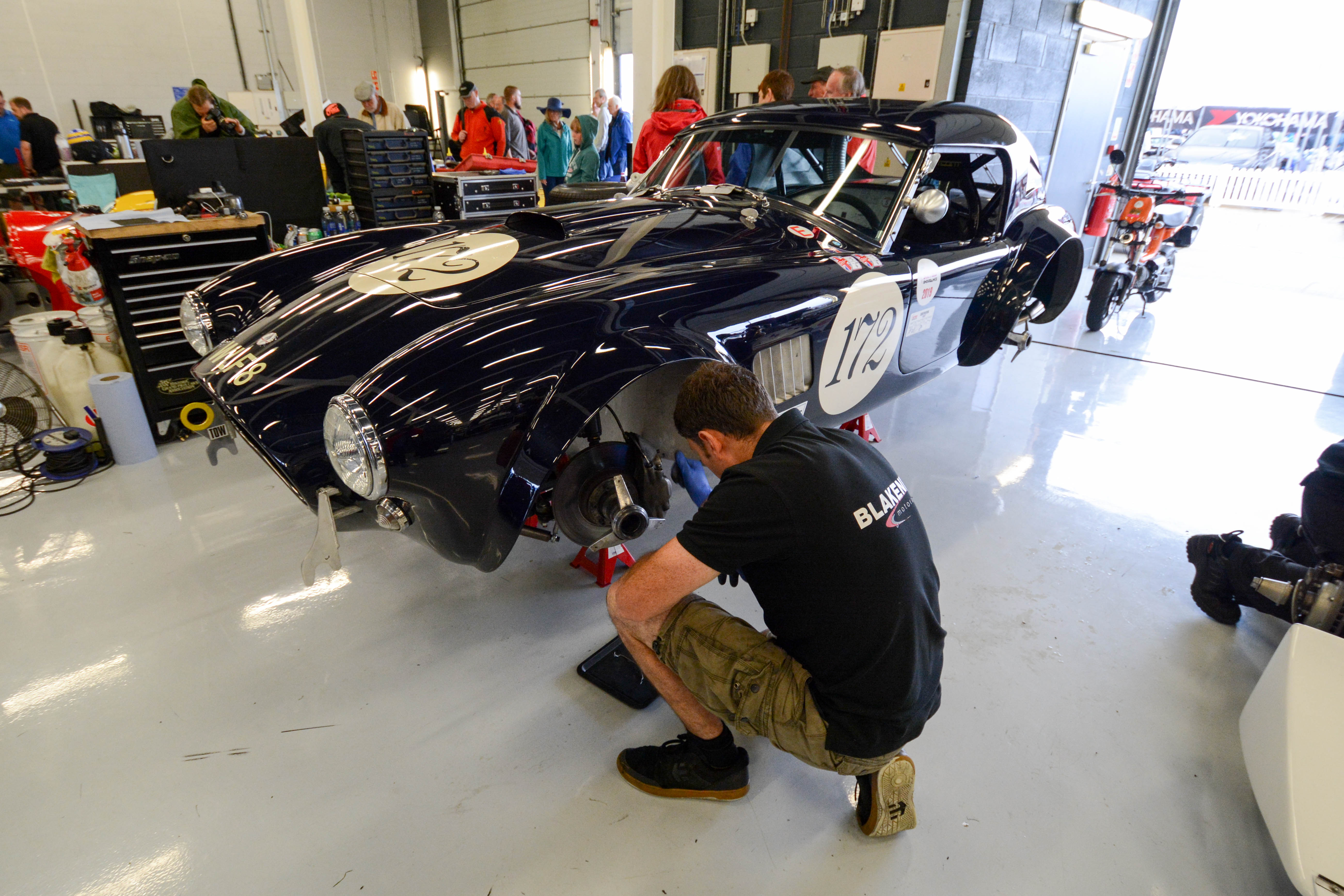
AC
The immediate progenitor of the AC company was Weller Brothers Engineering. Founded in 1900 in West Norwood, South London, the Weller brothers built upon their experience of repairing cars and motorcycles to move into manufacturing a car of their own design in 1903.
The 20hp Weller Tourer received favourable reviews prompting a change of company name to Autocars and Accessories in 1904. This coincided with the brothers joining forces with John Portwine (a meat store owner) who just might have influenced the move to manufacture a three wheel commercial vehicle called the Autocarrier
With the addition of a seat, the Autocarrier spawned a passenger cycle-car called the A.C. Sociable (driver on the single rear seat and passengers up-front in a double seat replacing the commercial vehicle’s storage boxt). The sales success of the these commercial and passenger vehicles eventually prompted a further change of company name in 1911 to Auto Carriers Ltd. This was when the curvaceous Art Nouveau AC logo came into being.
The establishment of Auto Carriers Ltd also coincided with a move of manufacturing premises from South London to Thames Ditton (to the West of London). Unfortunately, car manufacturing capability was interrupted by WW1 and a temporary switch to armaments manufacture with car production resuming in 1919 with vehicles using the brand new six-cylinder straight-six overhead cam engine designed by John Weller. Rather amazingly, this engine was used in AC cars until 1963.
In 1921, Australian born businessman and inveterate racer Selwyn Edge bought a shareholding in the company and he encouraged a major publicity drive through involvement in various types of motoring competition. In 1922, the company changed its name again to AC Cars Ltd. and in the following years a number of notable drivers of the day including Sammy Davis and Edge himself were utilised to deliver a variety of race wins and motoring records at home (Brooklands, Brighton Speed Trials etc.) and abroad (Montlhery and the Monte Carlo Rally).
In 1927, Edge assumed full ownership of the company which changed names yet again to AC (Acedes) Ltd but despite some considerable competition success, the sale of road cars waned and the company was forced into liquidation in 1929 at the time of the worldwide Great Depression
Shortly thereafter however, another pair of brothers, William and Charles Hurlock, acquired remaining company assets including the Thames Ditton factory, all staff and car components enabling them to launch a new range of AC models in 1933.
Manufacturing was switched once more to serve military needs during WWII with car manufacture resuming with the rather staid AC 2 Litre in saloon, drop head coupe and tourer forms. Fortunately however, AC finances were bolstered by government commissioned construction of fibreglass bodied invalid cars powered by small Villiers 2-stroke engines. These one-person invalid cars which were a familiar sight in the UK in their pale blue colour scheme and they remained in production until 1976 providing an extremely useful revenue stream for AC in the post-war years. These invalid cars were joined by other AC microcar models such as the Petite and the Bag Boy golf cart.
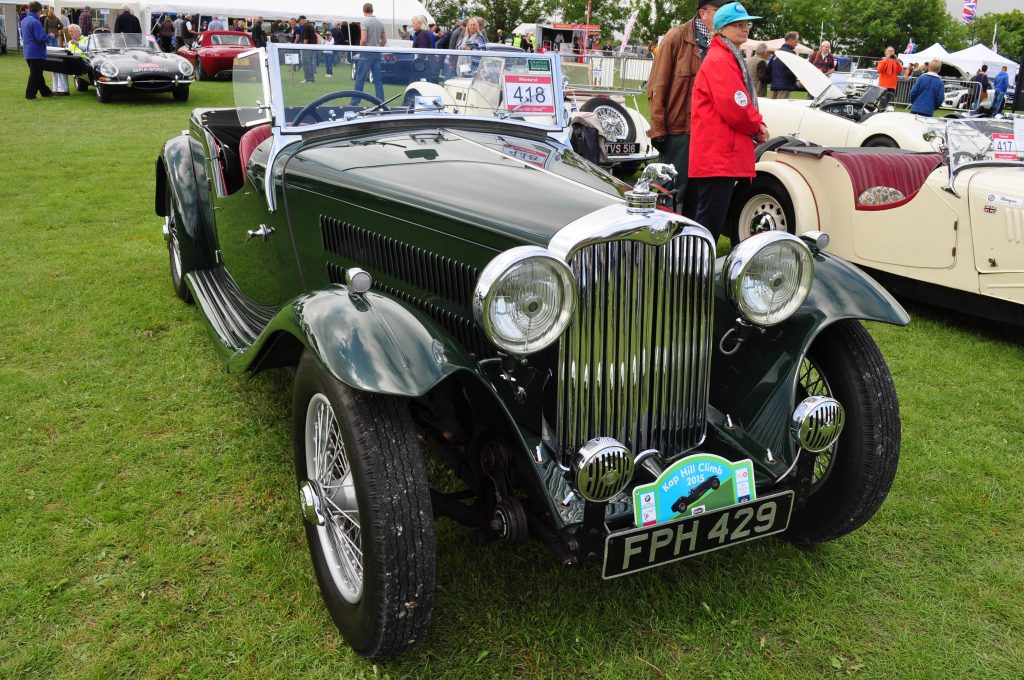
During the early ’50s, the Hurlock Brothers recognised the burgeoning post-war demand for more modern sports cars at home an in the lucrative US market and they started to cast around for a ready made car which they could adopt as the new AC flagship. At that time, there was an abundant choice of “specials”, designed and built by talented and innovative engineers to meet the needs of club racers and they soon identified the car they needed.
The Tojeiro Bristol Special quickly spawned the AC Ace, Aceca and Greyhound models and ultimately the spin-off evolution (or is that radical mutation?) of the AC Ace into the mighty Cobra.
TojOrigins
Although the Cobra was not launched until the early ’60’s, its origins go back to the the previous decade This was a period during which up-and-coming car designers benefitted from the commissions of well heeled gentleman with a penchant for club racing. The resulting cars were often cobbled together from a variety of proprietary mechanical components bolted into a custom chassis and wrapped in lightweight aerodynamic custom bodywork.
One such ’50’s club racer was Cliff Davis and the young designer he chose to use to build his new car was John Tojeiro – a self-taught automotive engineer of Portugese/English parentage (affectionally known as Toj).
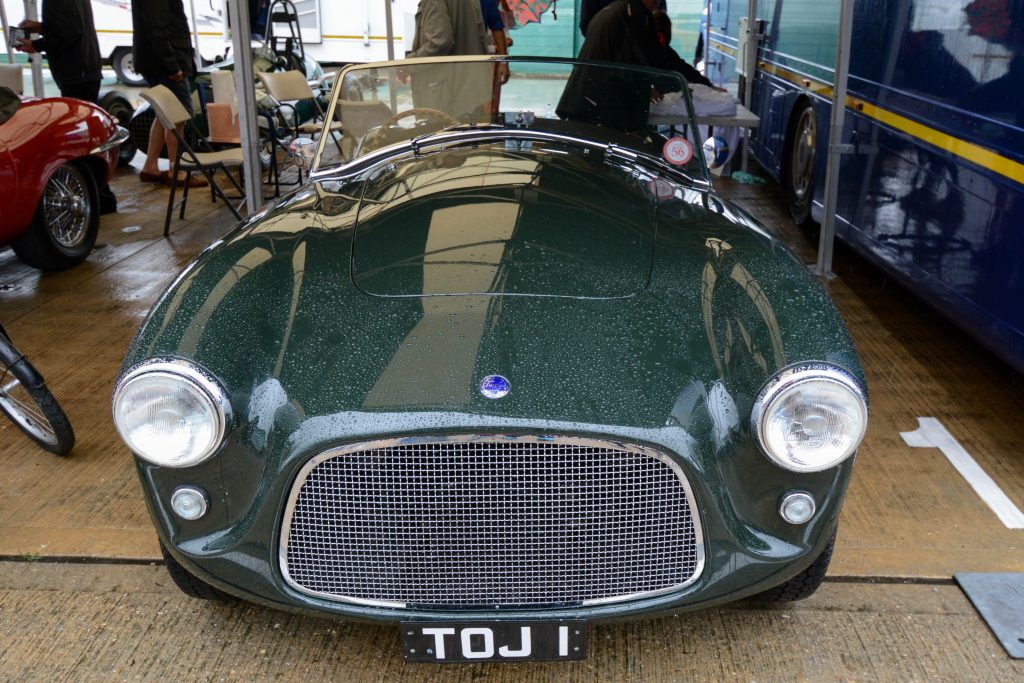
Toj had already built a number of one-off specials starting with his 1951 Tojeiro-MG Sports which was powered by an MG XPAG 7565 engine. The car is pictured above albeit with later Ferrari 166 Barchetta style bodywork constructed to Superleggera principles by Rod Jolley. This bodywork is similar to Toj’s later Bristol Special that inspired the AC Ace.
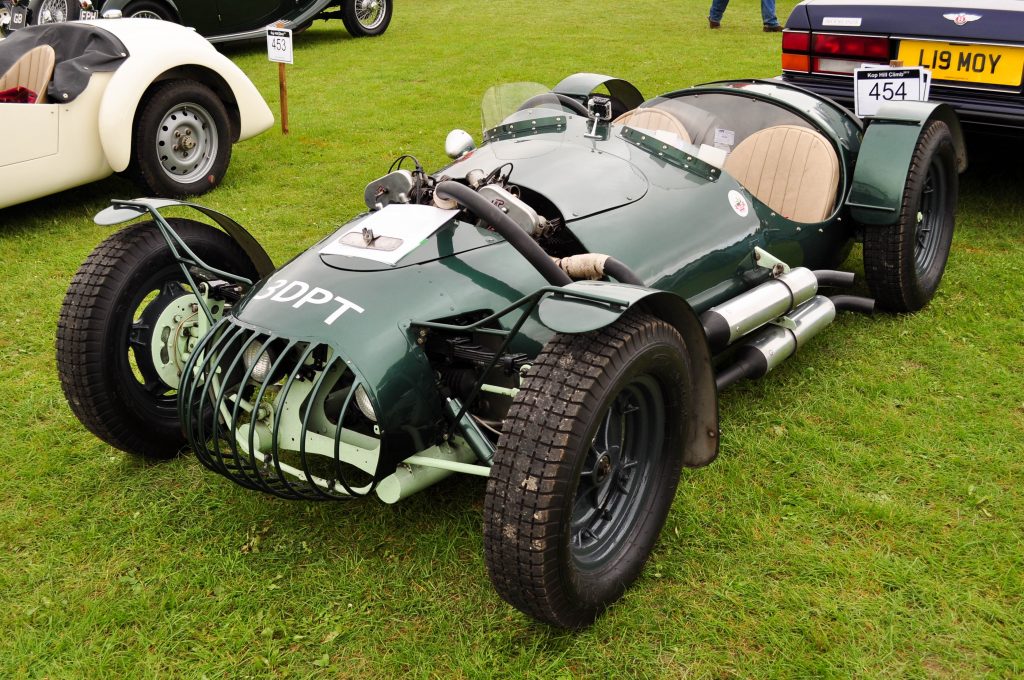
Toj’s second creation was a rather curious and vestigial device powered by a J.A.P. (J.A. Prestwich Industries of Tottenham) V-twin engine which was subsequently purchased and heavily modified by Brian Lister (of Lister Cars fame).
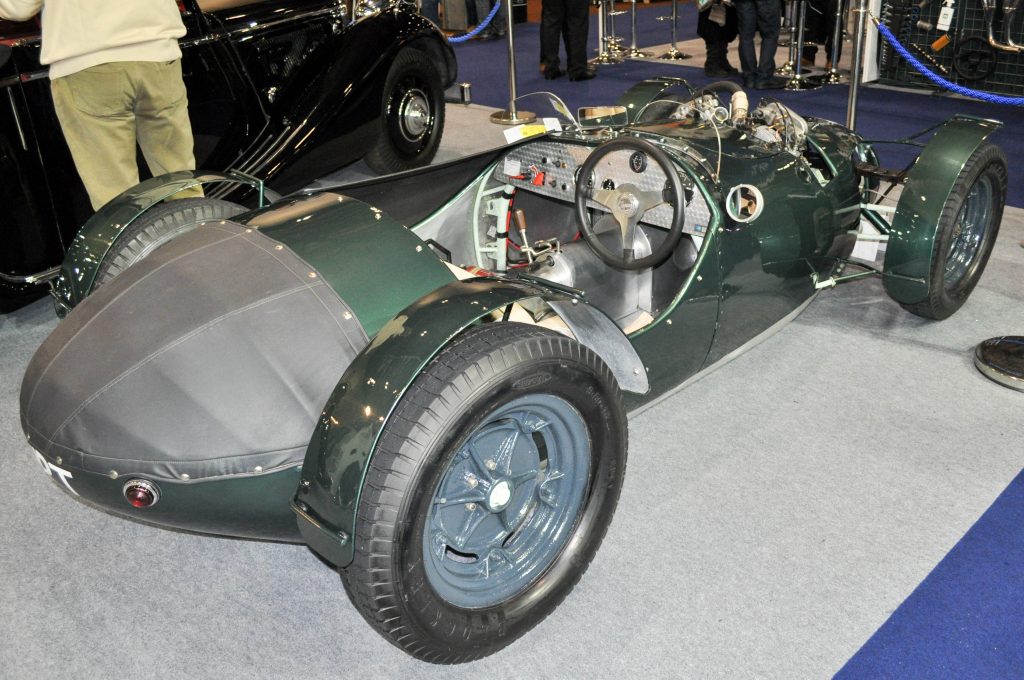
The Tojeiro J.A.P., nicknamed “The Asteroid” by Toj, was not weighed down by an excessive amount of metal bodywork and it even had a fabric rear covering for some of its mechanical workings. Consequently, its impressive power to weight ratio and superb handling resulted in it being highly competitive in club racing circles. As most of this success was in the hands of Brian Lister, some regard the Asteroid as the first Lister race car.
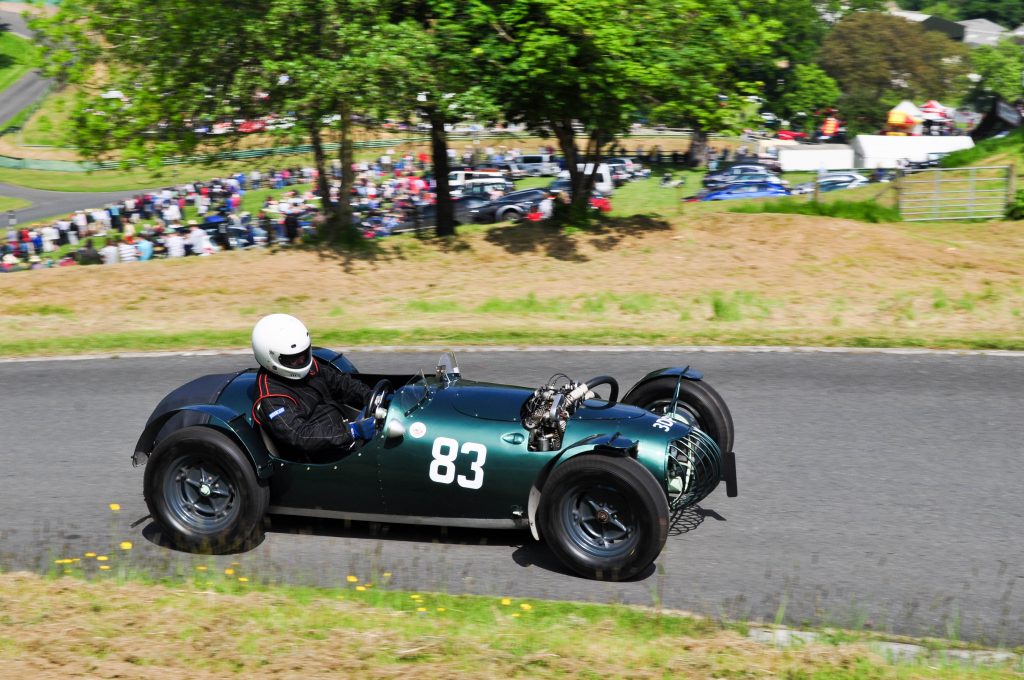
Other Toj creations included a number of MG Specials, a Butterworth flat-4 engined special, Bristol Specials built for Cliff Davis and others, various Lea Francis, Jaguar, Aston Martin, Climax, AC and Buick Specials, Formula Junior cars and designs for Britannia and Berkeley.
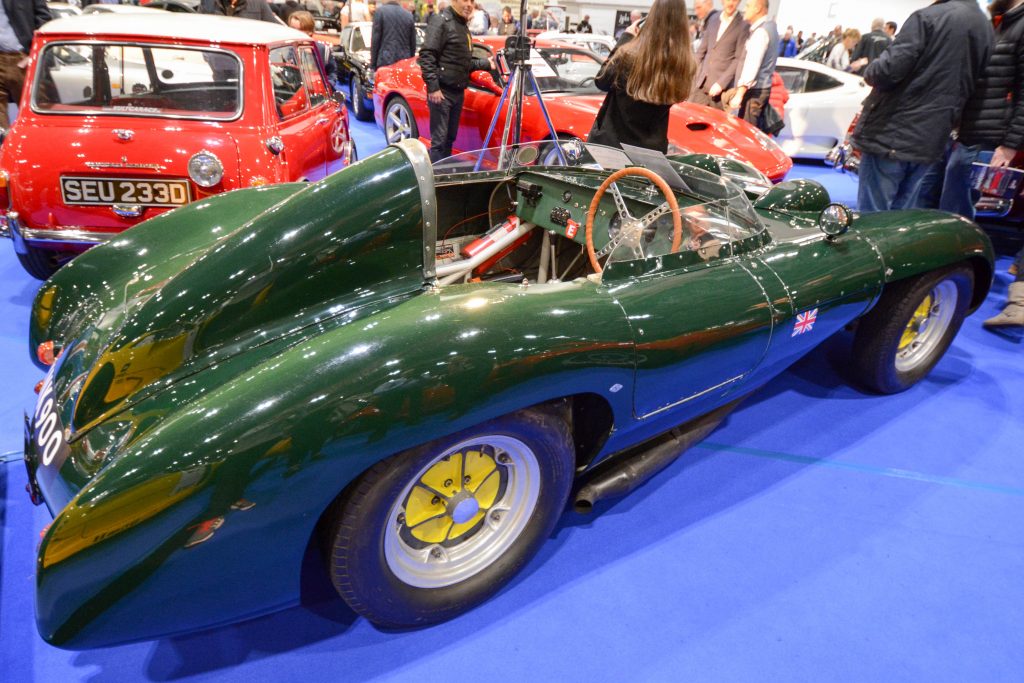
Particular favourites of mine are the specials that Toj created for the Edinburgh based racing team, Ecurie Ecosse which was founded by racing driver David Murray and mechanic Walke Wilkinson. Specials EE1 and EE2 created by Toj for Ecurie Ecosse can be regarded as the first mid-engined GT race cars. The cars initially utilised Coventry Climax and Buick engines but rather ironically, one of the cars was later fitment of a 289 Cobra engine and this car still regularly competes in historic GT races.
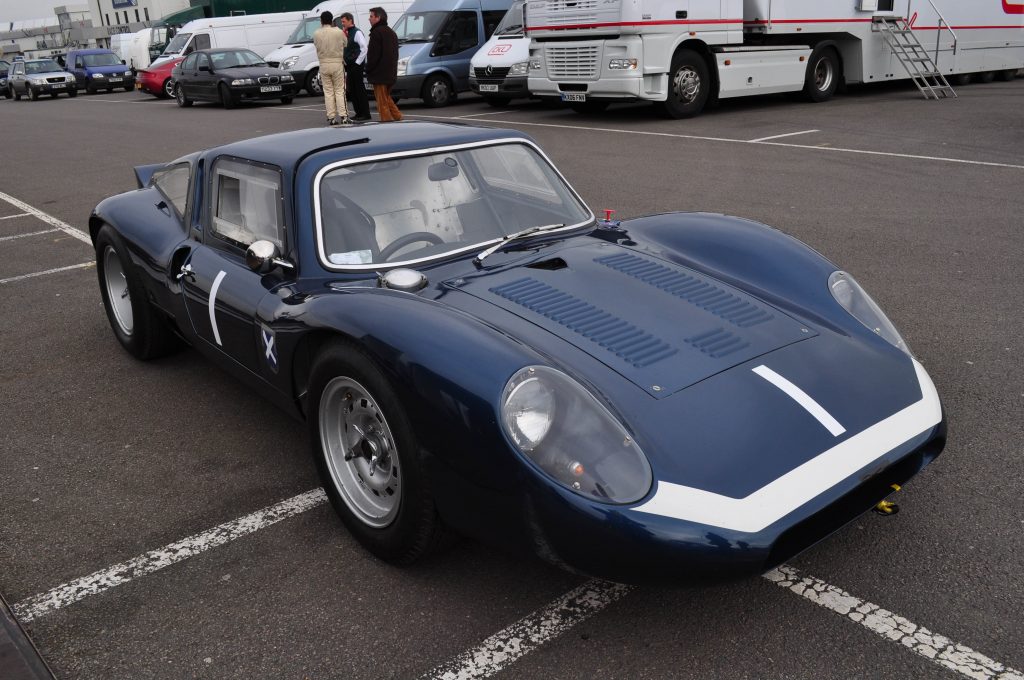
Returning to the story, Cliff Davis had successfully campaigned his Cooper MG Special (Reg: JOY500) in the 1500cc class but he needed a new car to race in the 2.0L class. He therefore commissioned Tojeiro to build a lightweight chassis/bodywork design to accommodate a tried, tested and tuned Bristol 2.0L straight-6 engine (originally from the pre-war BMW 328). At Davis’s specific request the resulting Tojeiro Bristol Special maintained continuity with Davis’s earlier successful mount (the Cooper MG Special) by adopting a very similar Ferrari Barchetta body design.
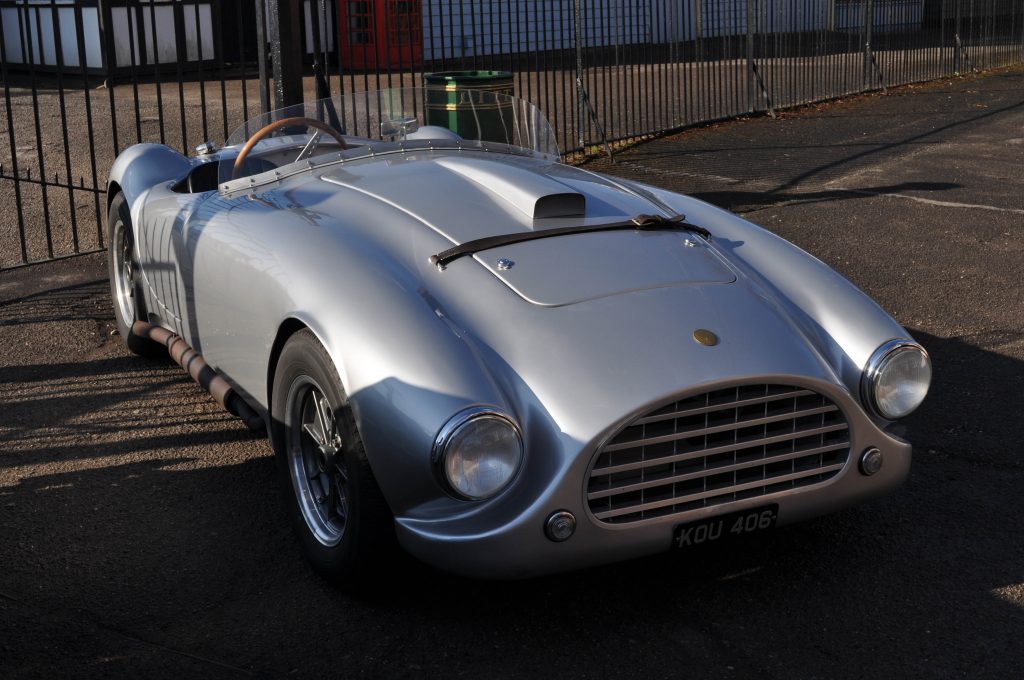
The bodywork of both cars was a blatant copy of a Ferrari 166 Barchetta but much to Davis’s delight, Toj’s new creation (Reg: LOY500) proved to be highly competitive in the 2 Litre race category straight out of the box. This encouraged Davis to suggested that it should be put into limited production. Unfortunately, Tojeiro was busy working on a number of other commissioned specials so he had neither the time nor the wherewithal to set up any serious form of car production but thankfully, he was eventually persuaded to show LOY500 to the Hurlock brothers (owners of AC Cars).
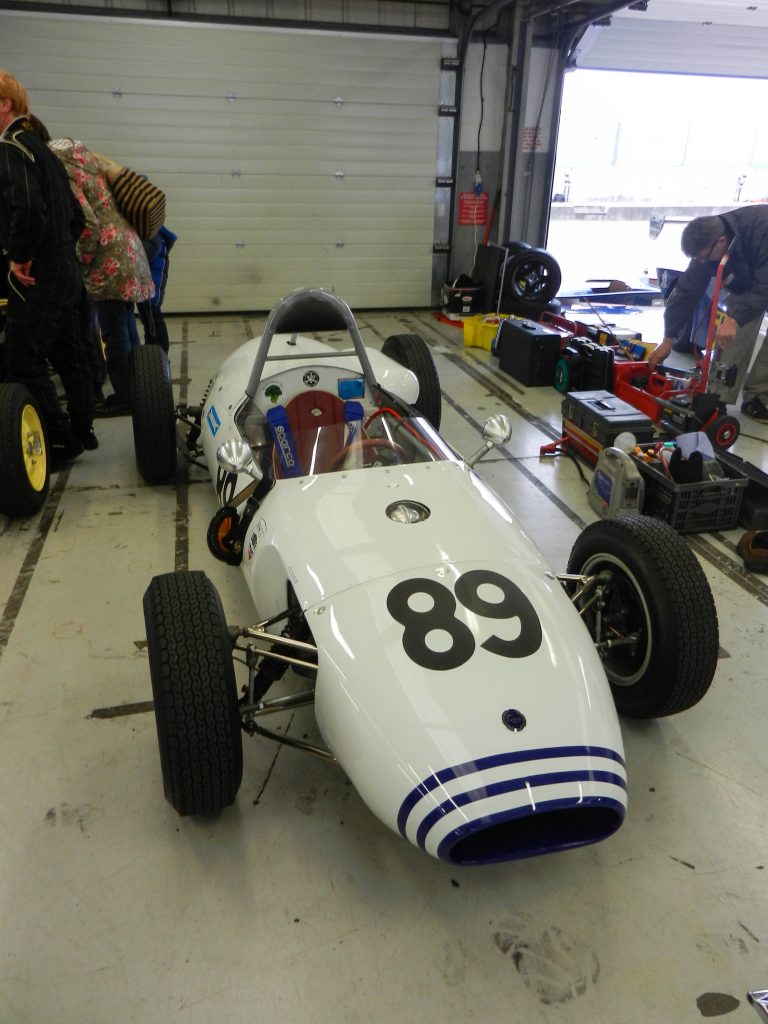
Base of the Ace
In an endeavour to revive AC’s post war fortunes, the Hurlock brothers realised that they had to add much more modern and sporty cars to their range and the car created by Tojeiro seemed to fit the bill. Having seen and been impressed by Tojeiro’s creation, they decided to adopt the Tojeiro Bristol Special as AC’s new sports car and they offered him the princely sum of £5 per manufactured car for using his design which was to be marketed as the AC Ace.
AC Ace
Launched in 1953 and in continuous manufacture until 1963, the AC Ace consisted of a simple ladder chassis incorporating independent suspension with transverse leaf springs front and rear. Attached to the chassis was a lightweight tubular frame around which hand (English) wheeled bodywork was wrapped.
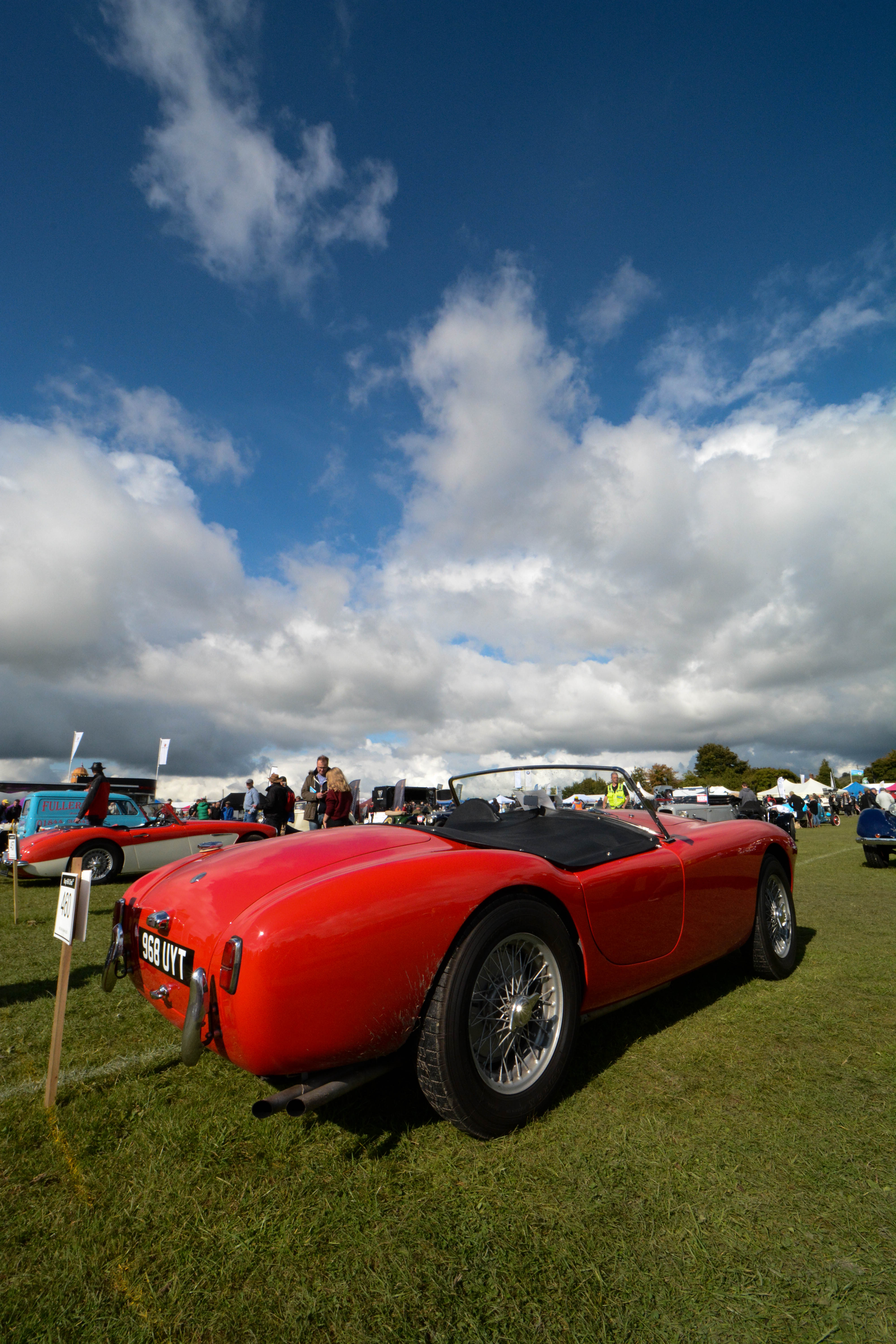
Some bodywork modifications from the Bristol Special design were required to raise the headlights to the correct road legal height and to motivate the car, the Ace was initially fitted with AC’s pre-war 2.0L 100bhp straight-6 engine (originally designed by John Weller in 1919). This was mated to the then ubiquitously used Moss 4-speed gearbox.
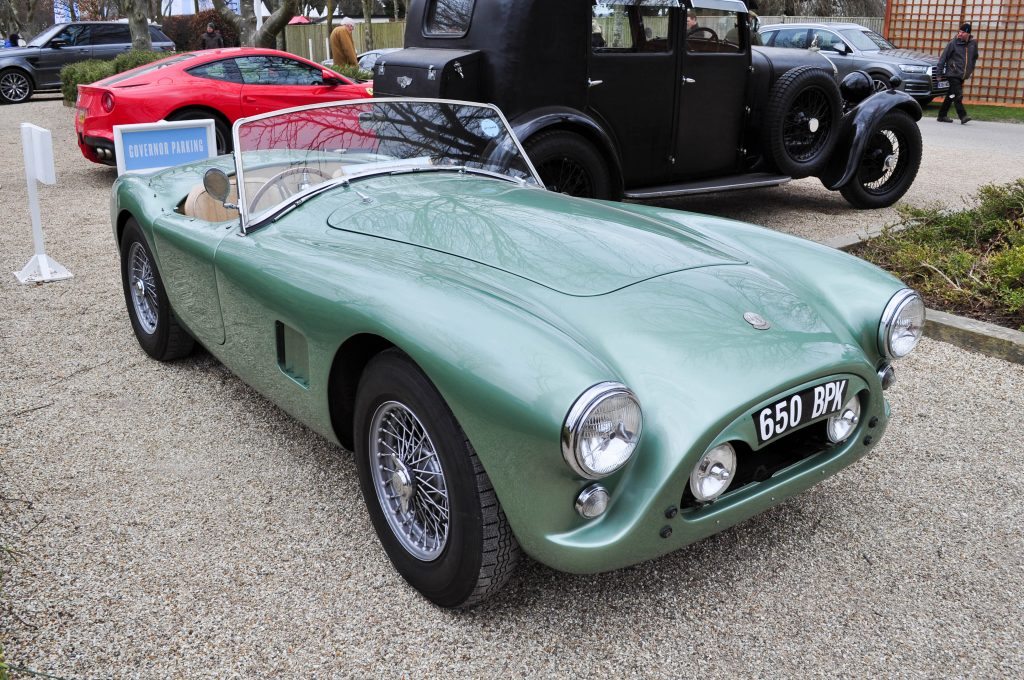
From 1956 however, Ace owner’s need for speed resulted in AC offering an alternative power plant in the form of the 2.0L 120bhp straight-6 Bristol unit (as used the Tojeiro Bristol Special upon which the Ace was based). This more sporty and race proven engine with triple downdraft Solex carbs, plus an improved overdrive gearbox and front disc brakes made the Ace a much more desirable car but more radical developments were to follow.
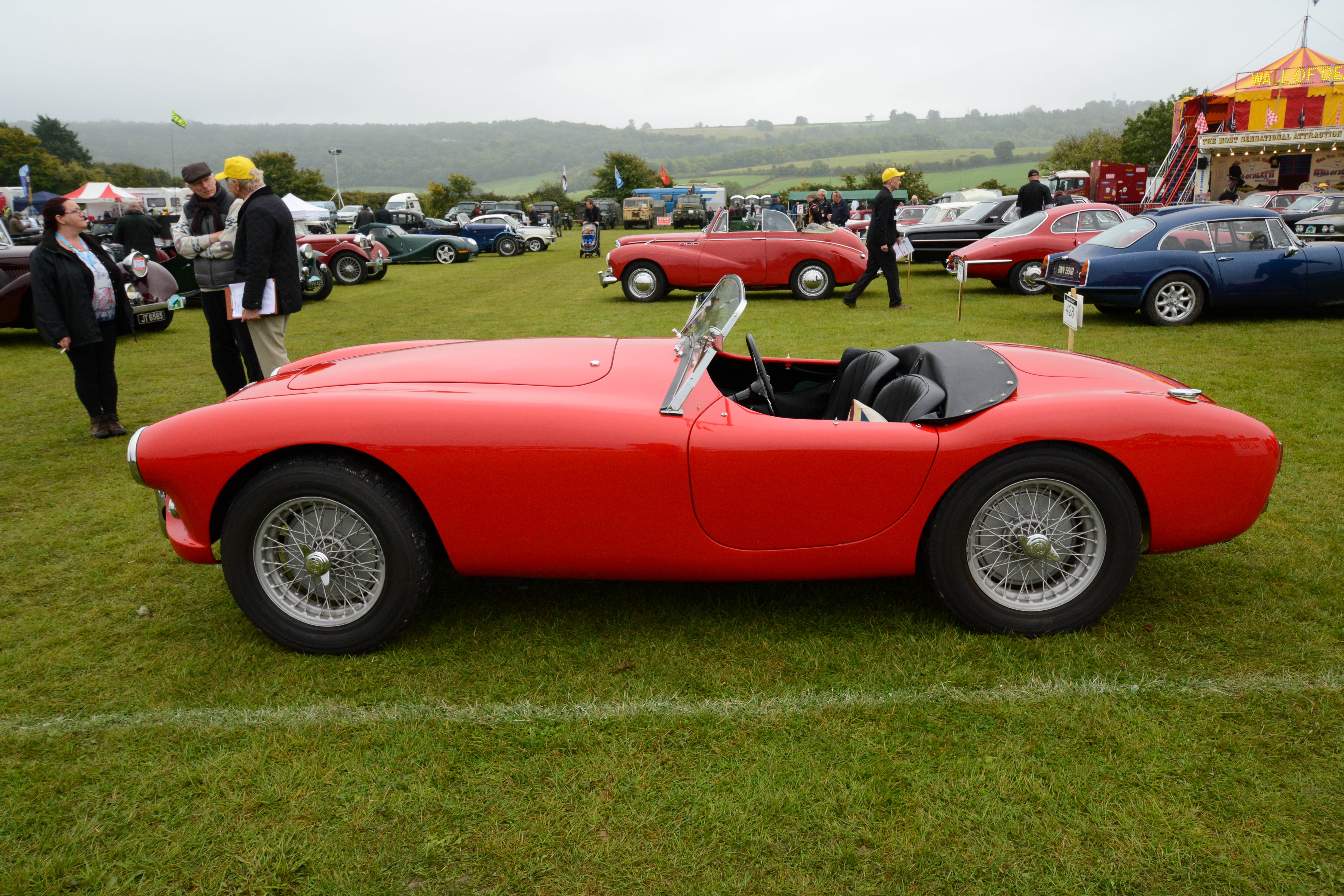
Insertion of the Bristol engine almost certainly encouraged more enthusiastic use of the Ace in racing competition which included a privateer class win for an AC Ace at Le Mans in 1959. This involved Ken Rudd “borrowing” a road going Ace from its owner and then after carrying out minor modifications, the car was driven to Le Mans where it competed for stipulated 24 hours to win its class before being driven back the UK and returned to Mrs Waugh, its owner. Imagine that happening today!
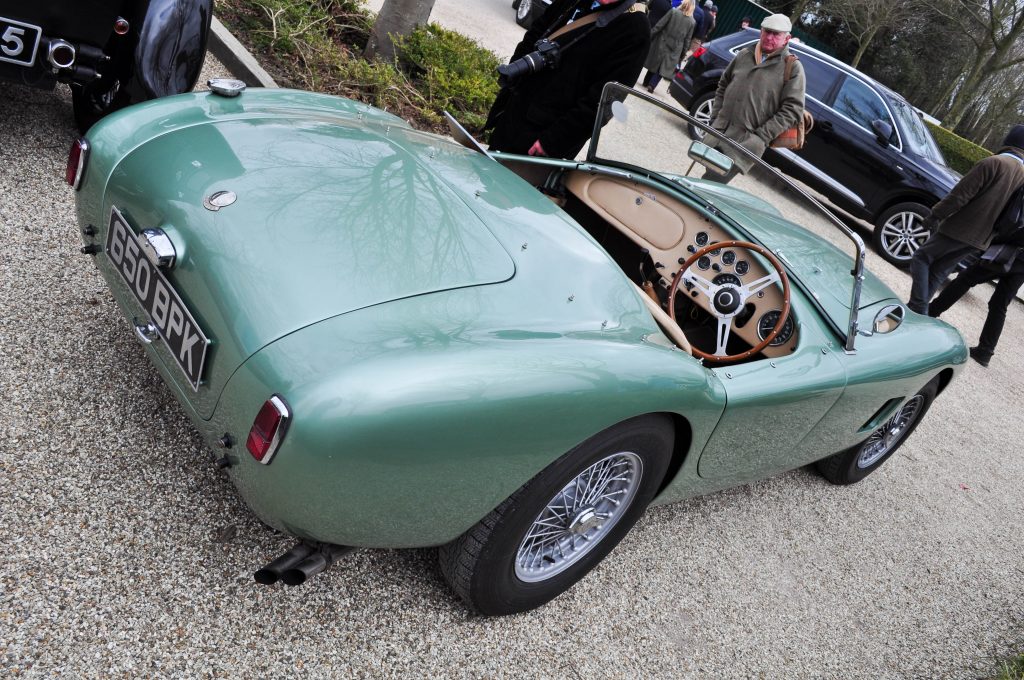
As is always the case, AC owners, dealers and tuners kept looking for further improvements in performance and handling and there was another cloud on the horizon to contend with as AC were becoming increasingly concerned about continuity of supply of Bristol engines. Loss of the favoured Bristol engine would leave them with a gap in engine supply before the Ford V8 engined Cobra was launched.
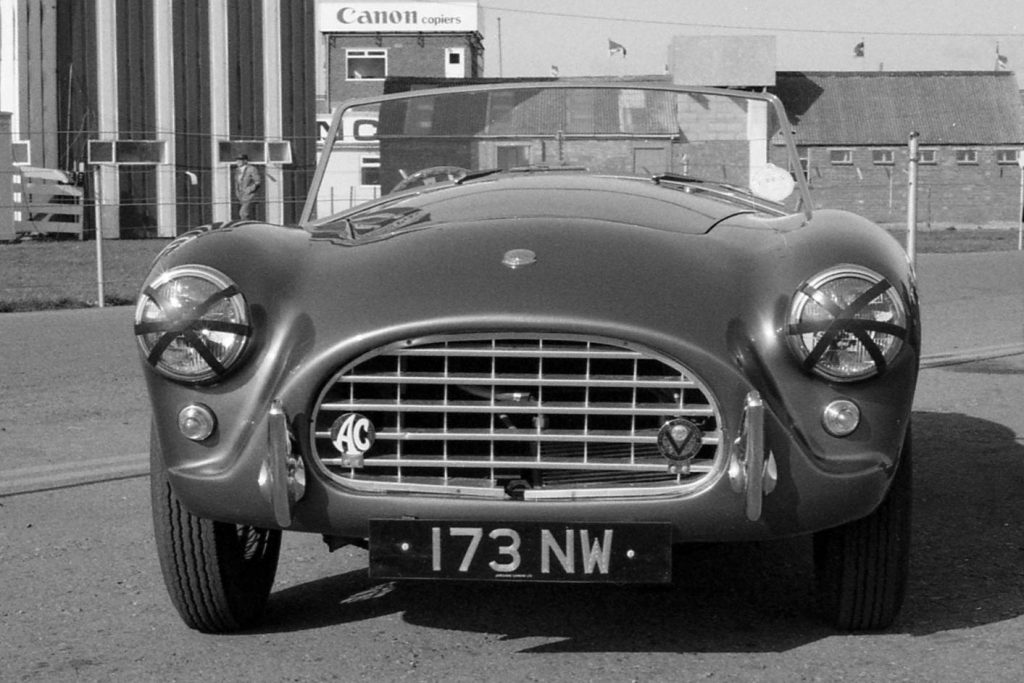
Engine tuner Ken Rudd came to the rescue in the short term with a cunning plan to adapt the 2.6 Litre Ford Zephyr straight-six engine for use in the Ace (and the Aceca and Greyhound models). Under the control of his Ruddspeed tuning company, Rudd successfully converted customer cars prior to AC formally adopting this engine option in 1961 resulting in the delivery of 37 Ford engined “Factory” Ruddspeed cars. The number of customer cars converted by Ruddspeed themselves (with no factory involvement) is unclear.
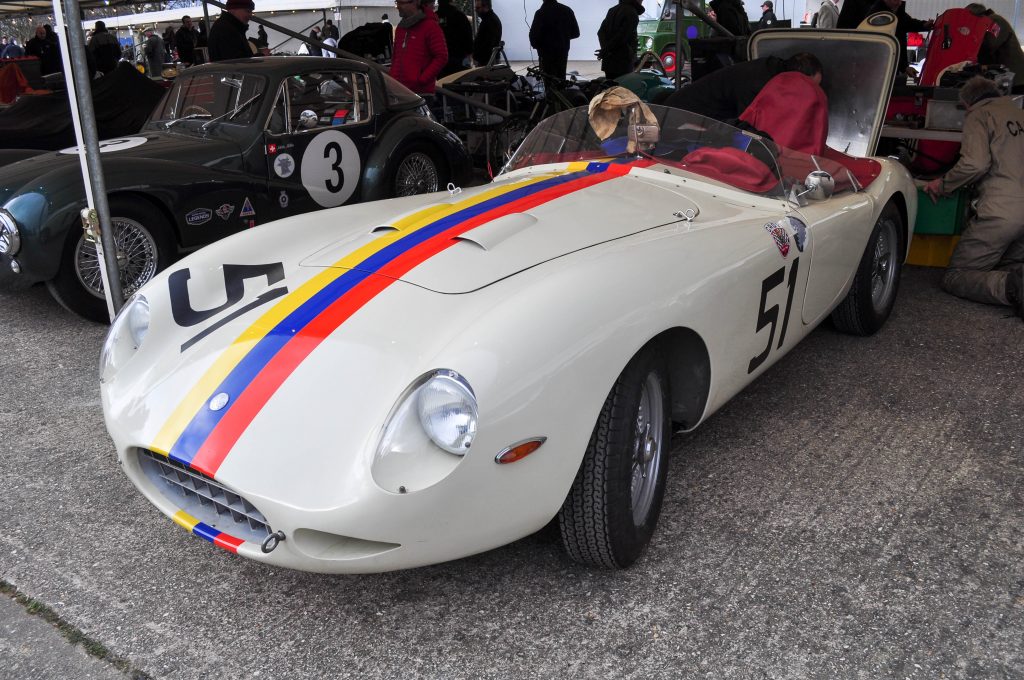
The good thing is that the Ruddspeed OHV straight-six engine with either its original cast iron cylinder head or an alloy Mays head and triple SUs provided a further performance improvement from the Bristol engine and it bridged the gap until the monstrous V8 Cobra took-off. Power output and top speed increased from 120bhp and 116mph for Bristol engined cars to 170bhp and a top speed of 130mph from the Ford engined cars.
AC Aceca
In 1954, one year after the launch of the Ace, the sleek and beautiful Aceca was offered to the motoring public. AC had offered detachable hardtops for the Ace but the driving experience was spoiled by the noise resonating around the cabin and by heat leaking through from the engine compartment. The fully lined fastback hard-top of the Aceca addressed the noise issue and provided much better weather proofing from fickle UK weather and a fibreglass bulkhead was fitted to reduce heat leakage from the engine bay. The other great feature of the fastback styling was the incorporation of an opening rear hatch (similar to the earlier Aston Martin DB2/4) set the standard for many GT cars to follow including the Jaguar E-Type, Jensen Interceptor, Reliant Scimitar GTE and MGB/C GT.
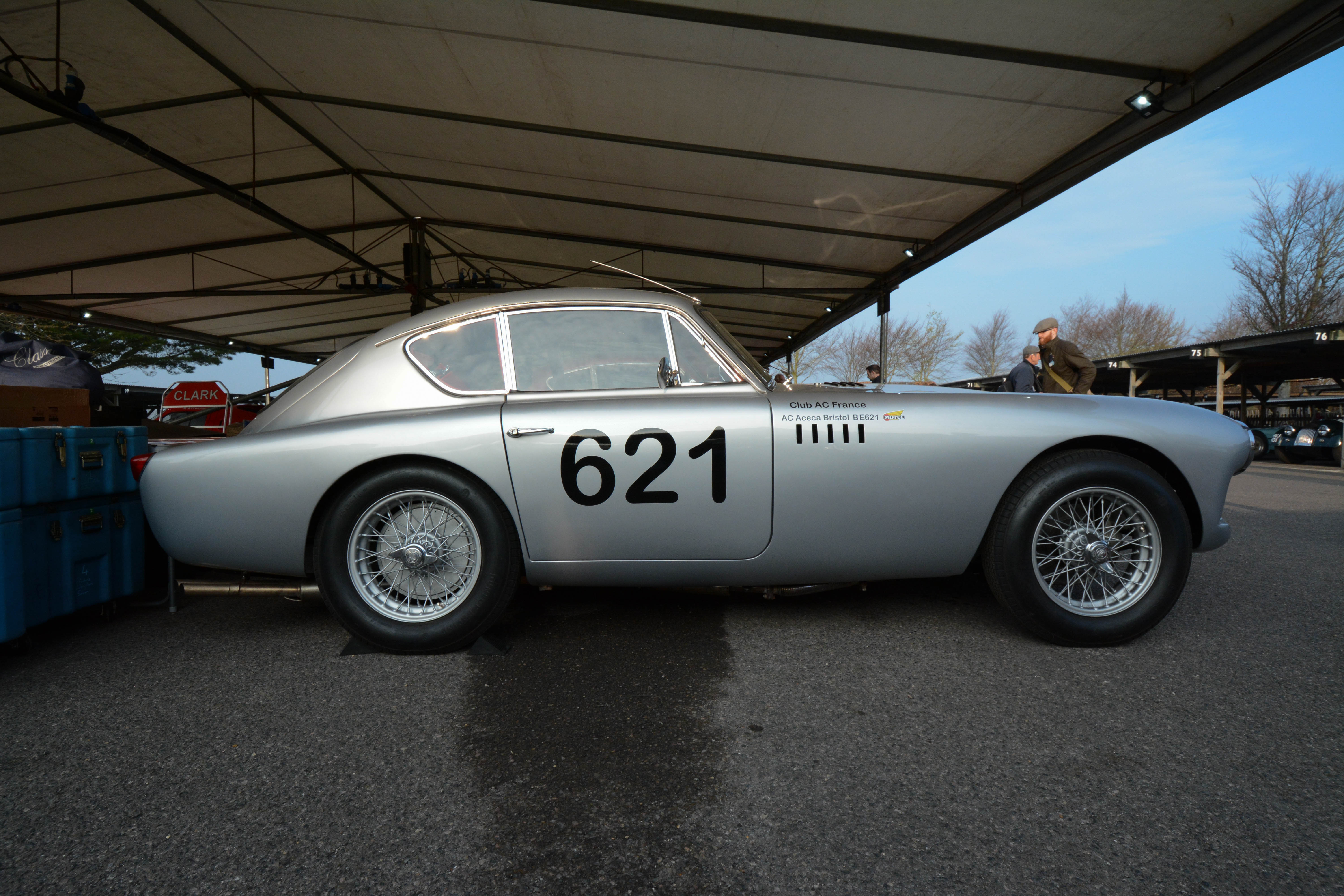
From 1954 to 1963, a 328 Acecas were built using the same engine options as its Ace sister model resulting in – 151 AC engined cars, 169 Bristol engined and just 8 cars with Ford power.
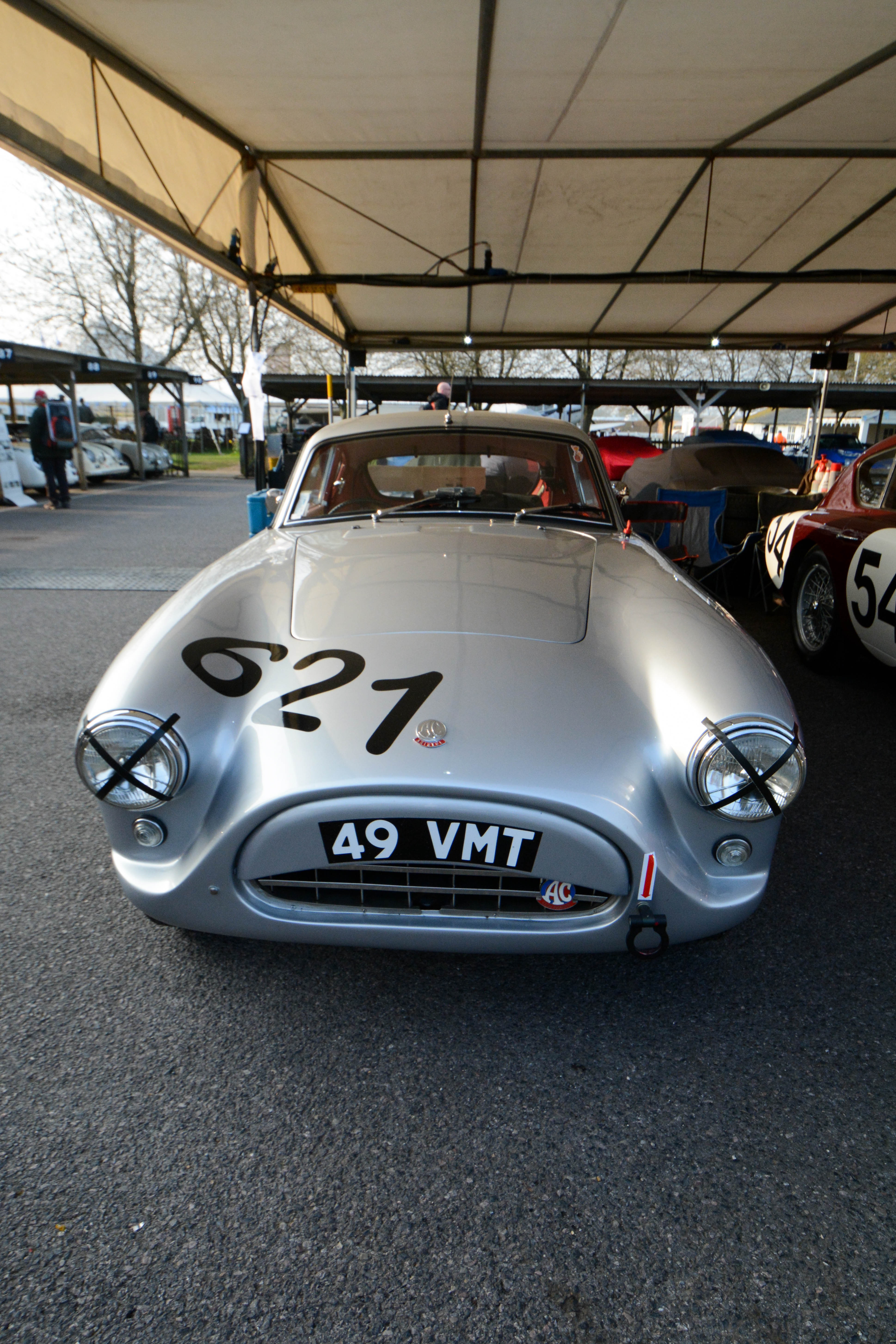
The lines of the Aceca are very pleasing to the eye, retaining the same shape of the Ace ahead of the windscreen but with the delicate roofline sloping down towards the rear. The opening rear hatch provided easy access to luggage for the lucky owners of this lovely Grand Tourer.

In the above picture of the Bristol engine in an Aceca, the triple Solex downdraft carburettor set-up and tubular exhaust manifolds can be clearly seen. Although this was an improvement on the rather ancient AC engine, this too was a pre-war BMW design that originally blessed the engine bay of their sporty 328 model.
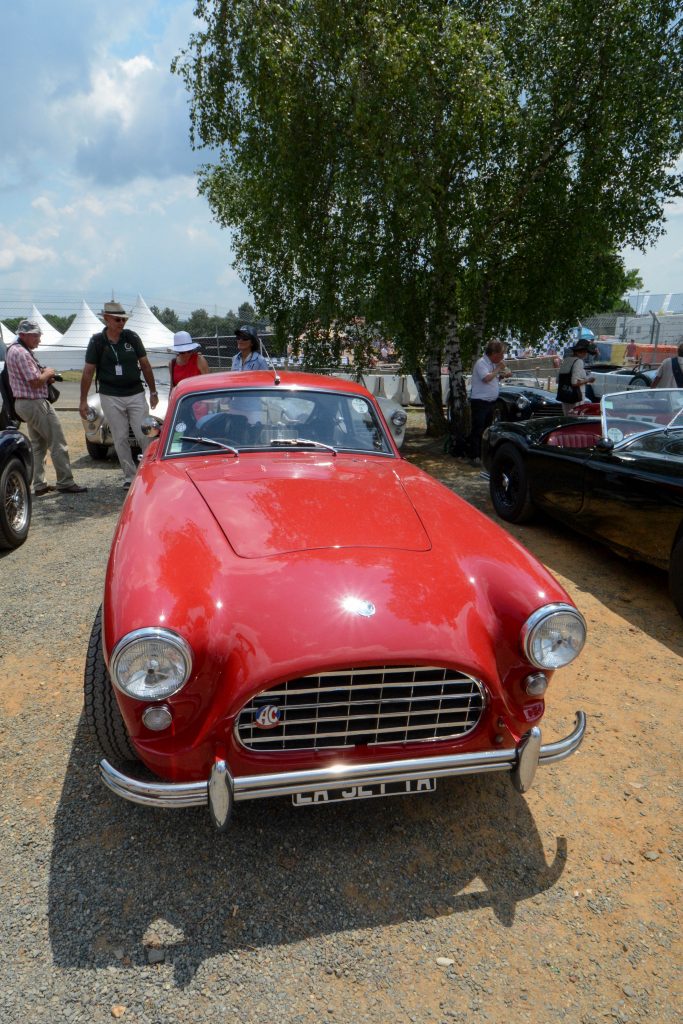
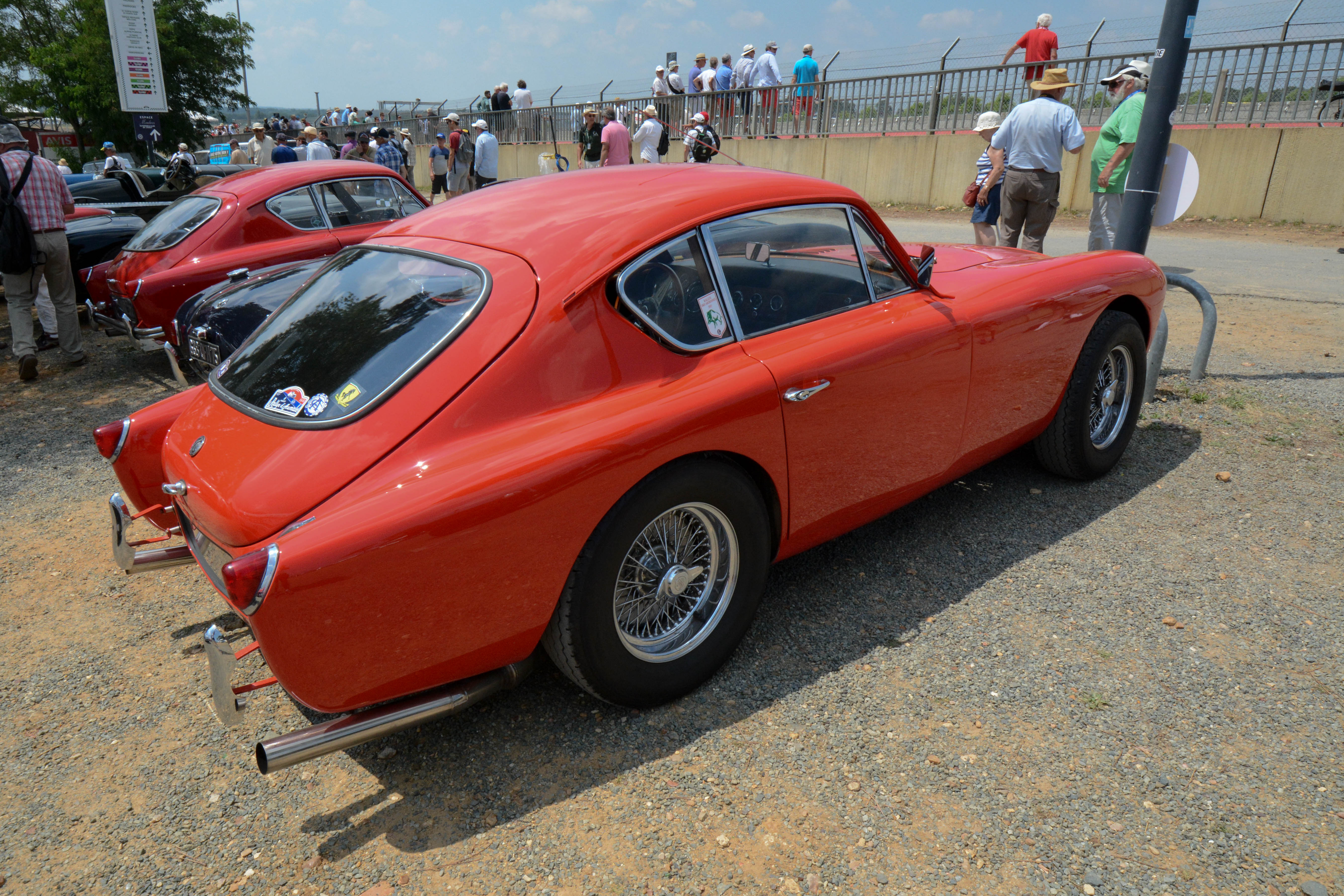
AC Greyhound
The Greyhound was AC’s attempt to attract or retain owners with young families. Based upon Ace/Aceca underpinnings but with the chassis extended by 10 inches and the stylishly understated but widened bodywork formed out of lightweight aluminium, the Greyhound was able to accommodate two small rear occasional seats.
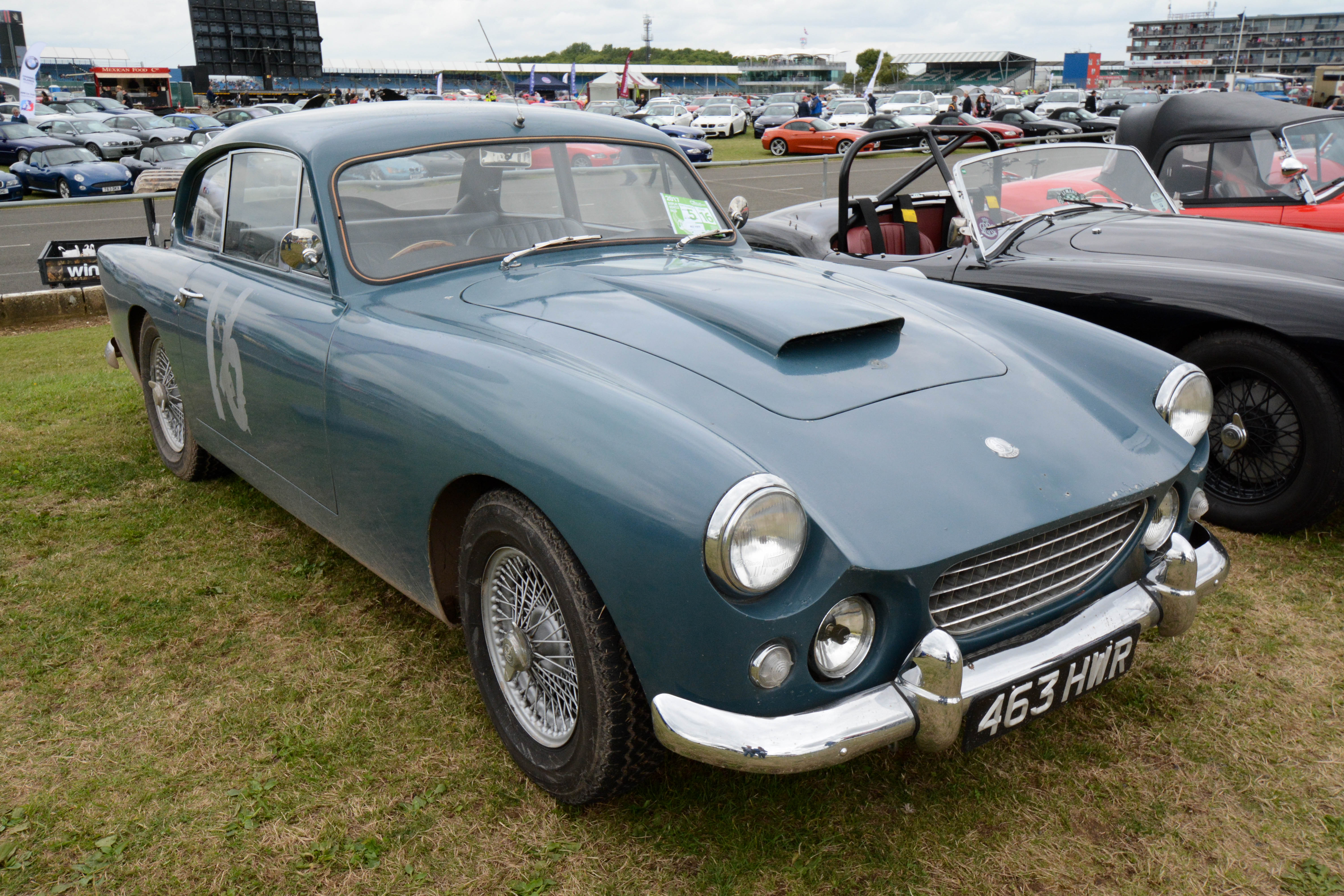
Unlike the Ace/Aceca, the Greyhound benefitted from coil spring suspension all round with semi training arms to the rear. This design dispensed with the transverse leaf spring arrangement as used in the front suspension of the Ace, Aceca and early Cobra’s.
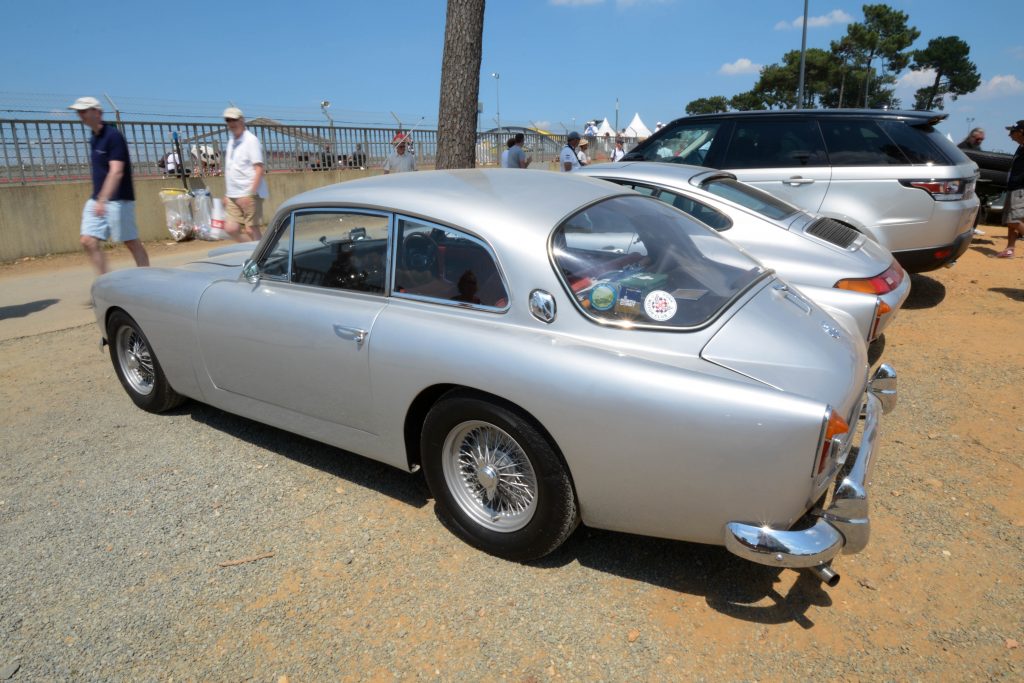
As regards engine and transmission, the Greyhound utilised the same engine options as the Ace/Aceca with cars leaving the factory with AC, Bristol or Ford Zephyr straight-six engines. Transmission was a four speed manual gearbox with optional overdrive.
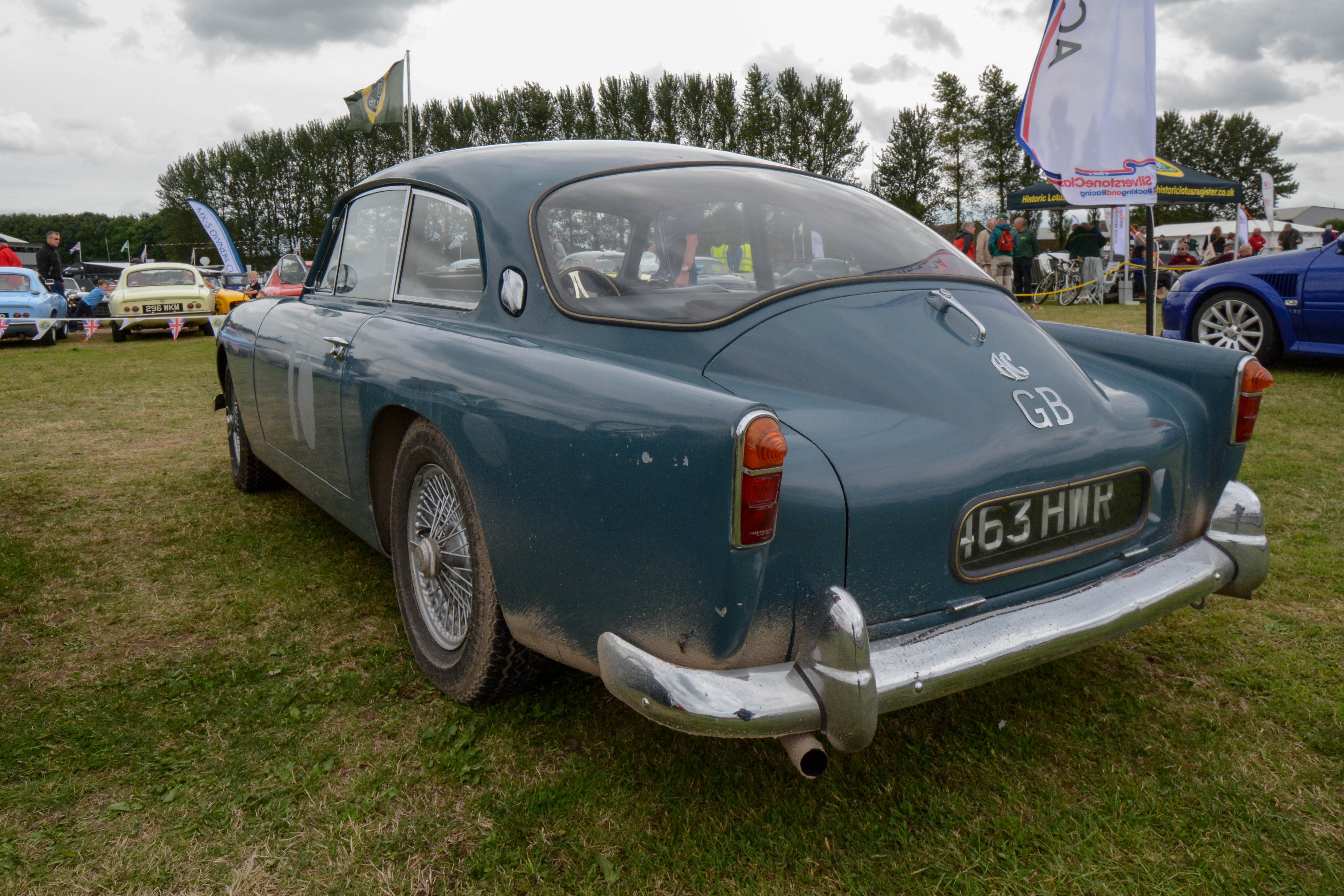
Due to the need to accommodate more passengers and luggage for Grand Touring, the Greyhound didn’t have the sleek elegance of its Ace and Aceca brethren but it was still a handsome car bearing some resemblance to other GT cars of the period such as the Bristol 541, the Gilbern Genie and even the Aston Martin DB4. With just 83 examples being built between 1959 and 1963, these are rare cars.
The Search For More Horses
From the advent of the Ace, AC had to carefully consider engine options for the car. Their ancient in-house AC straight six was used initially but it was regarded by many as being a bit asthmatic for that was meant to be a sports car. The Bristol straight-six engine was therefore offered as a more powerful alternative which pleased AC’s customers but the engine was hand built, quite expensive and there were concerns about its long term availability. These concerns proved to be well founded when Bristol Cars announced that they intended to cease manufacturing it and switch instead to using Chrysler V8 engines for their sporting Bristol saloon cars.
Long before AC considered it an option, Ken Rudd experimented with inserting American V8 engines into an Ace chassis starting with a Chevrolet unit which was deemed to be too heavy as it created massive understeer and it caused the front suspension of the donor car to collapse. Rudd then tried a much lighter and smaller capacity Buick V8 engine which proved to be much better. Unfortunately the $1 million price tag for the design and tooling for the Buick engine was beyond AC’s means and but it was eventually purchased by Rover to become their very long lived and widely used Rover V8 power plant.
Temporarily giving up on the idea of V8 power, Rudd finally opted to use tuned versions Ford’s new 2.6L straight-6 engine that was intended for their Zephyr model. This engine was offered by Rudd in various states of tune according to customer preference. Noting how successful this conversion was (for Rudd), AC were also forced to offer this engine option.
AC’s search for a longer term engine option continued with a rather curious in-house developed 4-cylinder boxer engine which ultimately foundered after they consulted with Porsche about the engineering “challenges” that they would need to overcome with boxer engine configurations.
In parallel however, a number of US owners of AC cars had been carrying out their own V8 engine transplant experiments with varying degrees of success. Most of the issues they encountered were associated with the additional stresses and strains on the chassis and suspension inflicted by heavy cast-iron V8 blocks and associated transmissions.
In 1957 however, AC supplied a factory modified Ace rolling body/chassis (including interestingly flared wheel arches) to an American customer who successfully fitted a Corvette V8 engine. Whether a certain Mr Shelby was aware of this conversion is open to debate but with experience of European racing (including an outright win at Le Mans), and experience of racing Allards, he was no stranger to the benefits of mating European body/chassis units with thumping great American V8 engines.
Cobra Hatched By US Chicken Farmer!
Carroll Shelby was a larger than life Texan who became a very successful racing driver only for his chosen career to be cut short at its peak by very serious heart problems. This forced him to retire from racing but he had a passion to build performance vehicles and the company he founded (Shelby American Inc.) became synonymous with specially modified and tuned road and race cars.
Before gravitating towards motor racing, Shelby had trained as a test pilot within the US Army Air Force which could have given him his taste for powerful engines and speed. At the end of WWII, Shelby moved back to civilian life where he dabbled in trucking, oil exploration and even chicken farming.
In the early ’50’s Shelby drifted into car racing after successfully driving a friend’s MG TC and soon after this, his natural ability earned him a drive in a Cadillac engined Allard which secured him a number of outright race wins. In 1954, whilst racing in Argentina, he was spotted by legendary British race team manager John Wyer, who offered him a place in the Aston Martin racing team.
Over the next few years, Shelby built-up a fabulous race driving CV in Europe driving for Aston Martin, back in the USA co-driving the supercharged Austin Healey 100S (achieving numerous speed records at Bonneville Flats), in South America in the Carrera Panamericana, in the US again racing Ferrari’s and Maserati’s before returning to Europe in ’58 to race an Aston DB3 and a Maserati 250F.
The following year, 1959, was however to be his best year but sadly his penultimate year as a competitive racing driver. Following a season opening race in an Aston Martin at Sebring, Shelby again travelled across the pond to race a Porsche at Nurburgring before co-driving (with Roy Salvador) an Aston Martin DBR1 to to secure outright victory at Le Mans in June of that year.
During the remainder of ’59 and ’60, Shelby drove a variety of cars including an Aston Martin DBR4 GP car, a Maserati Birdcage, a Maserati 250F, a Scarab and the famous “Old Yeller” Special. At this point however, a long standing heart condition brought his racing career to an end. Incidentally his heart condition eventually required him to undergo a heart transplant.
With Shelby’s vast racing experience and enthusiasm for motorsport, it was inevitable that he would seek out new business opportunities in that field. After setting up a high performance driving school, Shelby embarked upon a mission to obtain backing from one of the big US car manufacturers to build a highly competitive Euro/US hybrid race car utilising a lightweight, good handling and stylish European body/chassis and tried and tested US built V8 engine.
An attempt by the persuasive Texan to secure engines from Chevrolet was doomed to failure as the last thing that they wanted was a competitor to their Corvette model powered by one of their own engines. Ford on the other hand wanted nothing better than a Ford powered sports car to compete (and win) against Chevrolet’s Corvette so Shelby had his engine supplier but he still needed to identify a suitable European vehicle into which he could insert some US V8 muscle.
Following his experience driving an Austin Healey, Shelby had toyed with the idea of fitting a powerful V8 engine into one of these cars which would have been something of a squeeze. Instead however, his interest turned to the possibility of applying his engine transplant to an AC Ace.
Wasting no time, Shelby kicked off discussions with Charles Hurlock at AC and in 1961 he requested them to construct a modified AC body/chassis unit into which one of the two Windsor 221 cu/3.6 Litre engines initially provided by Ford could be fitted.
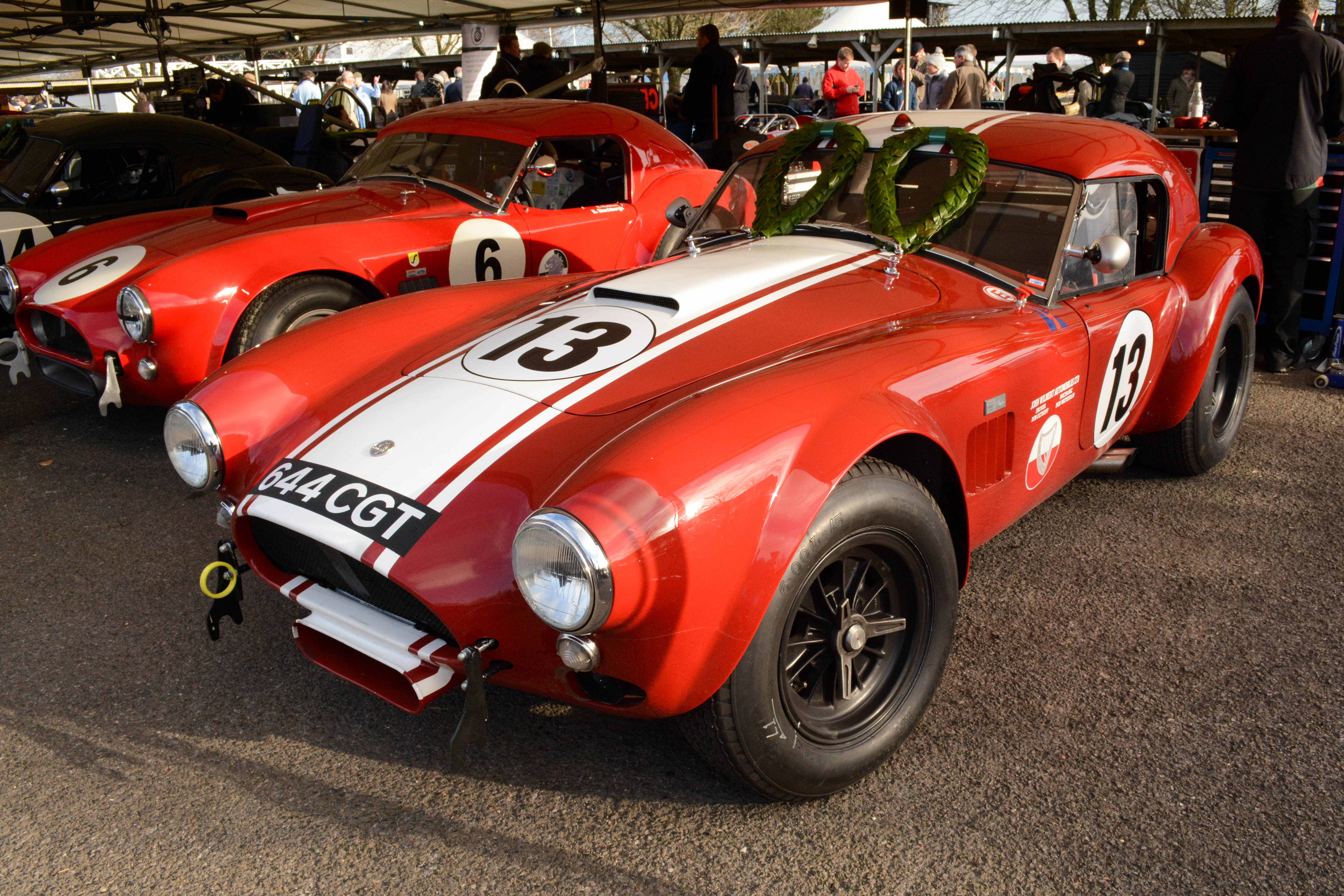
Shelby’s timing was perfect as Bristol had decided to cease production of their straight-six engine which was the most popular engine choice for the Ace and modifications had already been made to the Ace chassis to accommodate the Ford Zephyr 2.6 Litre straight-six engine which was deemed at that time to the most immediately viable replacement for the Bristol unit.

Construction of the V8 Ace chassis commenced in January 1962 including further modifications to accommodate the V8 engine such as relocating the steering box, fitting a beefier Salisbury differential and swapping to inboard rear disk brakes. The completed prototype chassis was then shipped (minus engine and gearbox) to Shelby in the US where it was promptly fitted with a larger capacity 260 cu/4.26 Litre V8 that had just been provided by Ford.
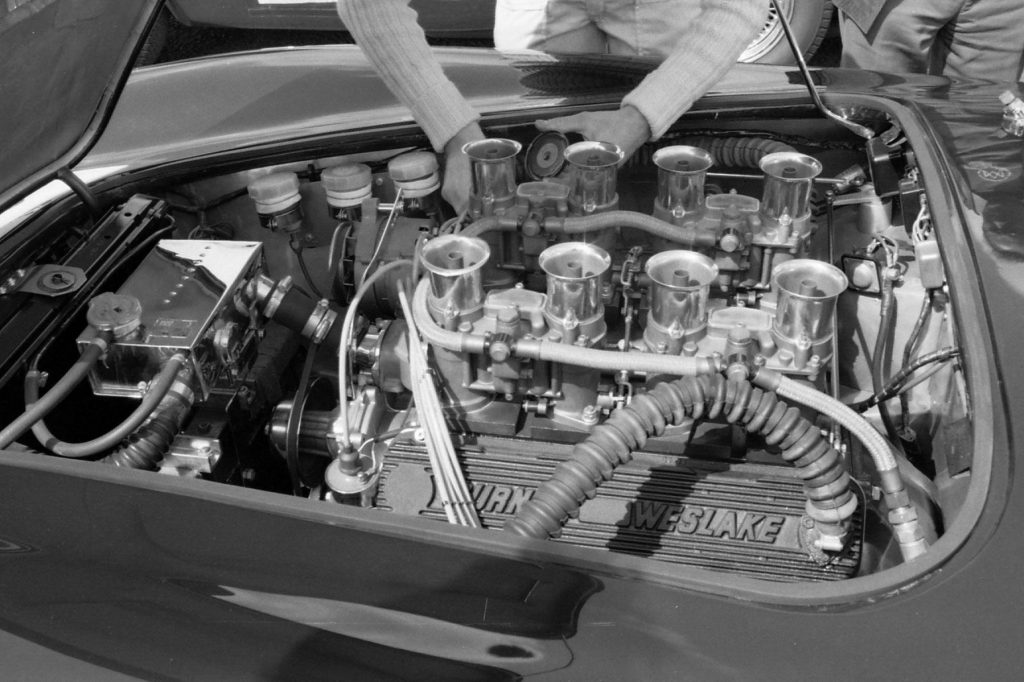
Thorough road testing of the car resulted in some relatively minor modifications to the braking system and to the positioning of the fuel tank but production of the car was under way by March 1962. Rather than a conventional factory production line however, the Cobra body chassis units were fully built, painted and trimmed in AC’s facility in Thames Ditton outside London before being shipped to Shelby’s facilities in LA and in Pennsylvania in the US to have engines and transmissions fitted.
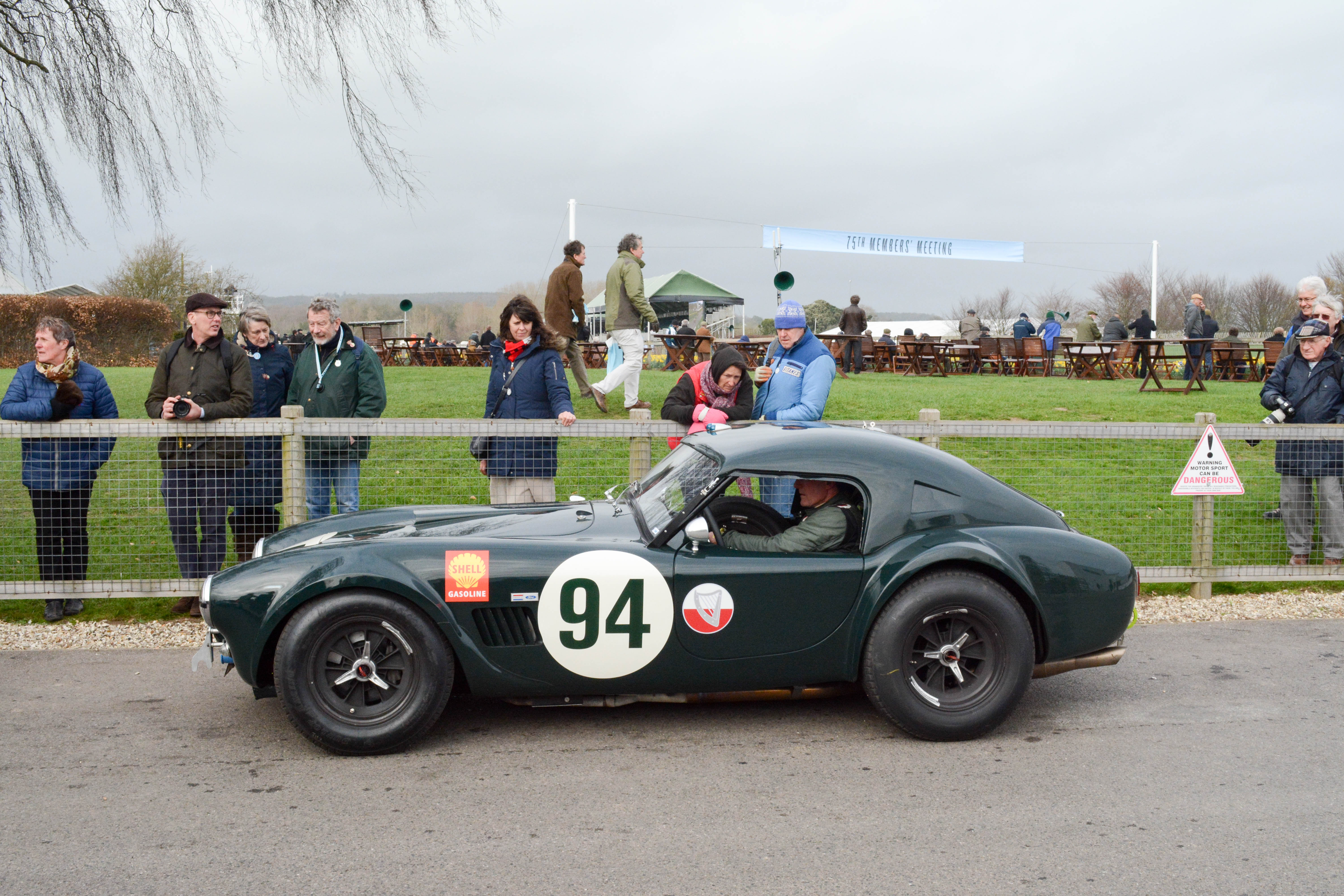
The initial production run of MkI Cobras used Ford’s 260 cu/4.2 Litre engines before a switch was made to the use of 289 cu/4.7 Litre engines for the remaining 51 Mk1 cars.
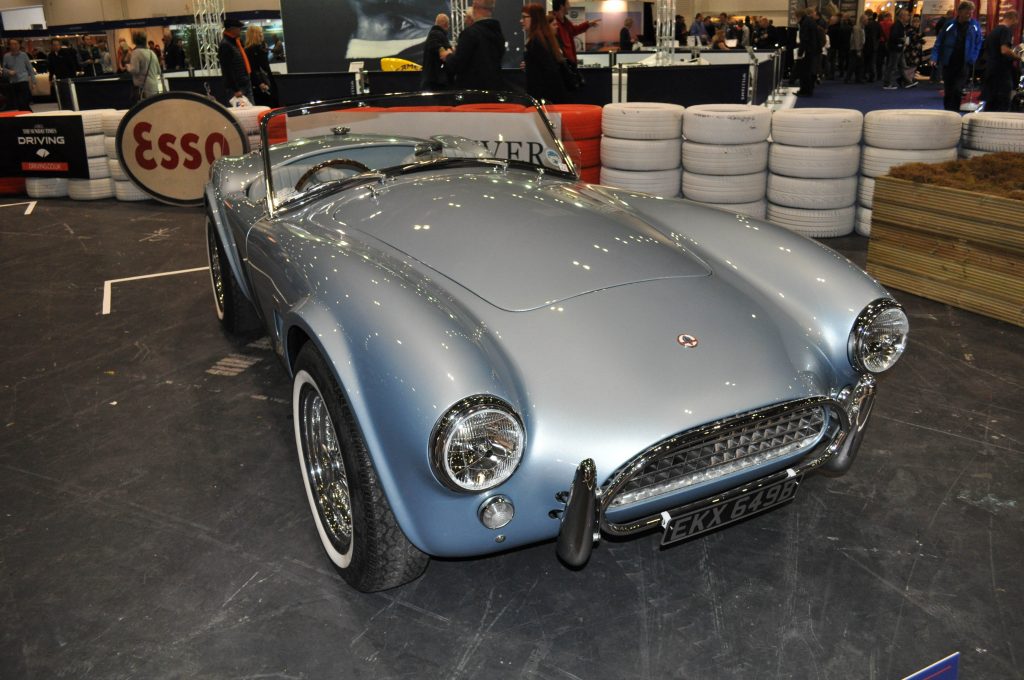
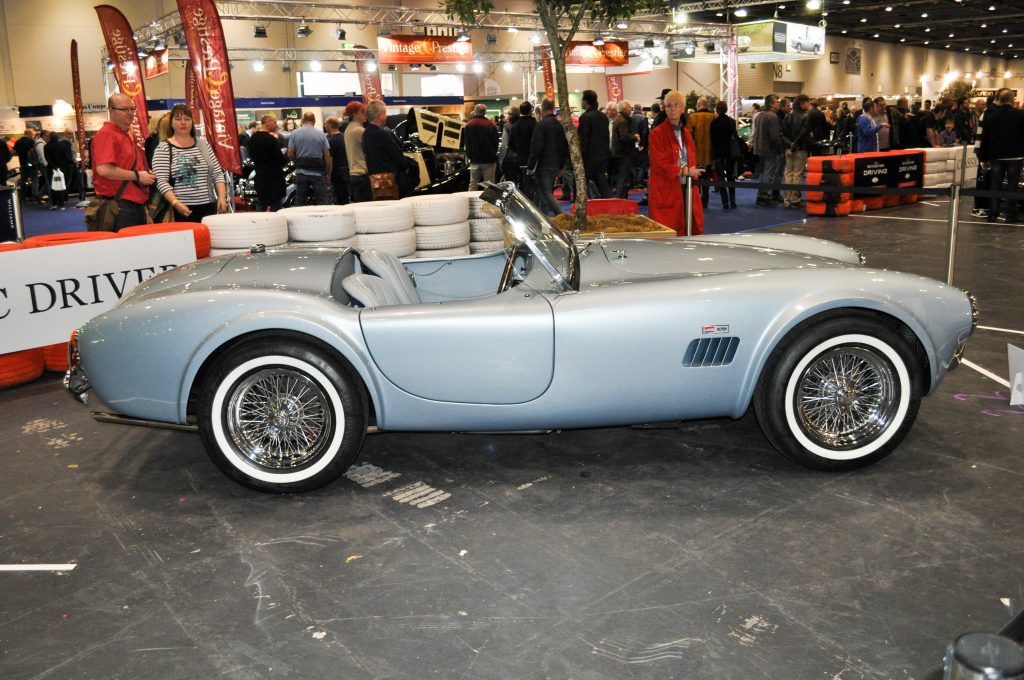
Spirited road and race use by Shelby’s race team and private customers gave rise to further modifications and improvements including replacement of the steering box with a much better rack and pinion set-up from an MGB, and the steering column was replaced with a VW Beetle unit. Interestingly however the transverse leaf spring suspension was retained in what was termed the MkII Cobra 289 which was built from early 1963 to 1965. The transatlantic construction process continued for US bound cars but AC also built complete cars for sale in Europe from this time.
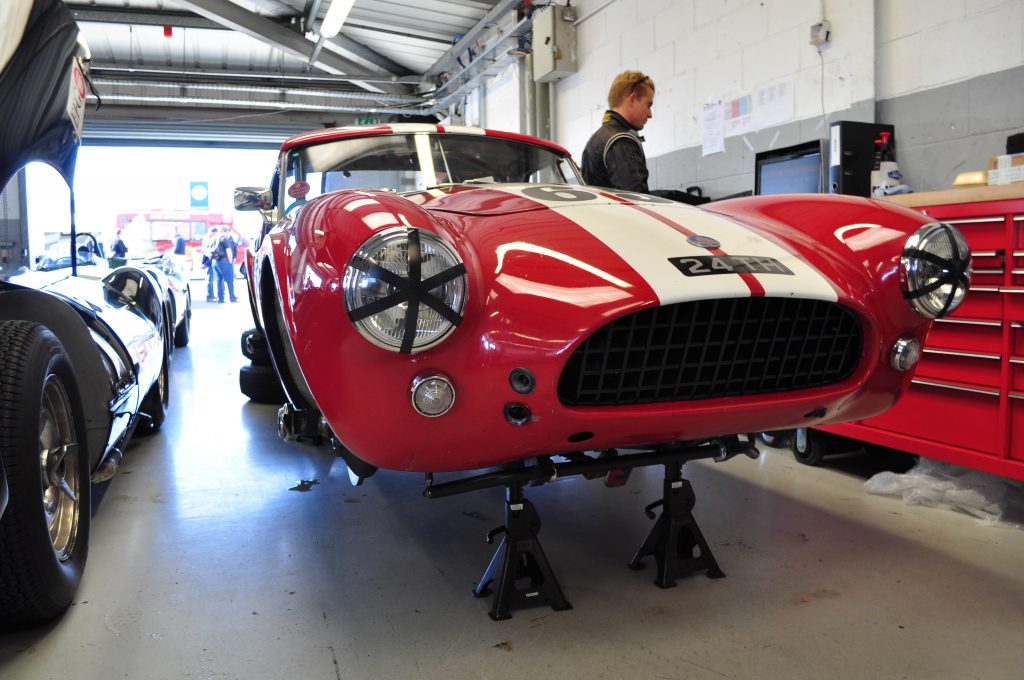
The radical move to squeeze a big block V8 engine into the Cobra chassis was preceded by some experimentation with a MkII car fitted with a 390 cu/6.4 Litre engine but this proved to be unsuccessful and it was recognised that a full chassis redesign was required. The resulting MkIII Cobra chassis utilised much sturdier chassis tubing and the rather crude transverse leaf spring suspension was replaced with coil spring suspension all round in order to support the immensely heavy but immensely powerful 427 cu/7 Litre V8 Ford engine.
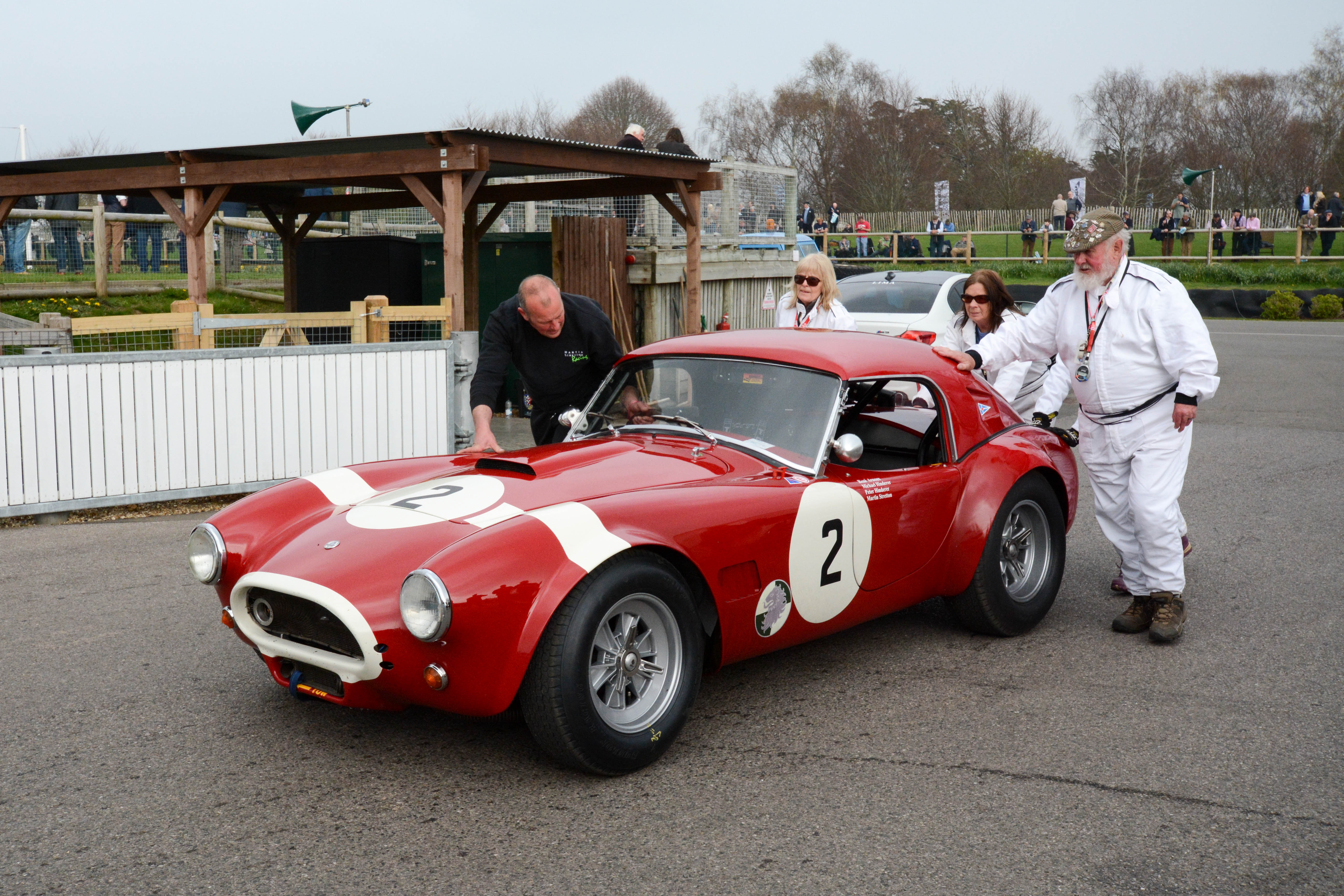
External changes to the car included much more bulbous wheel arches to accommodate fatter wheels and tyres and in some instances side-exhausts were fitted as these were popular in the American market at that time. Depending upon carburettor and tuning options, the mighty 427 Cobra was able to deliver between 425 and 485bhp and deliver a top speed of between 164 and 185mph which would keep them competitive on road and track ……… for a while at least.
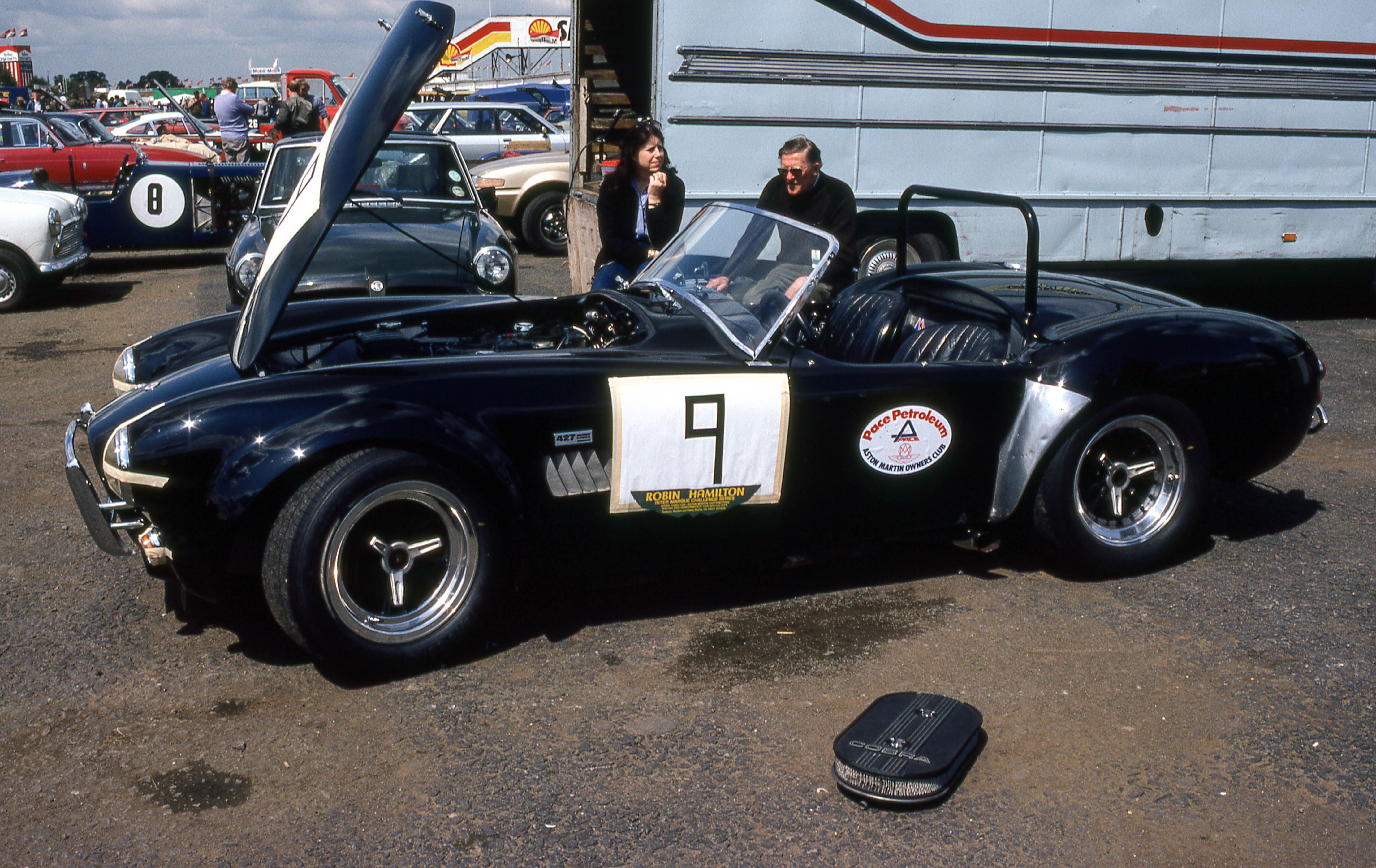
This fire breathing monster was launched in 1965 with production continuing until 1967.
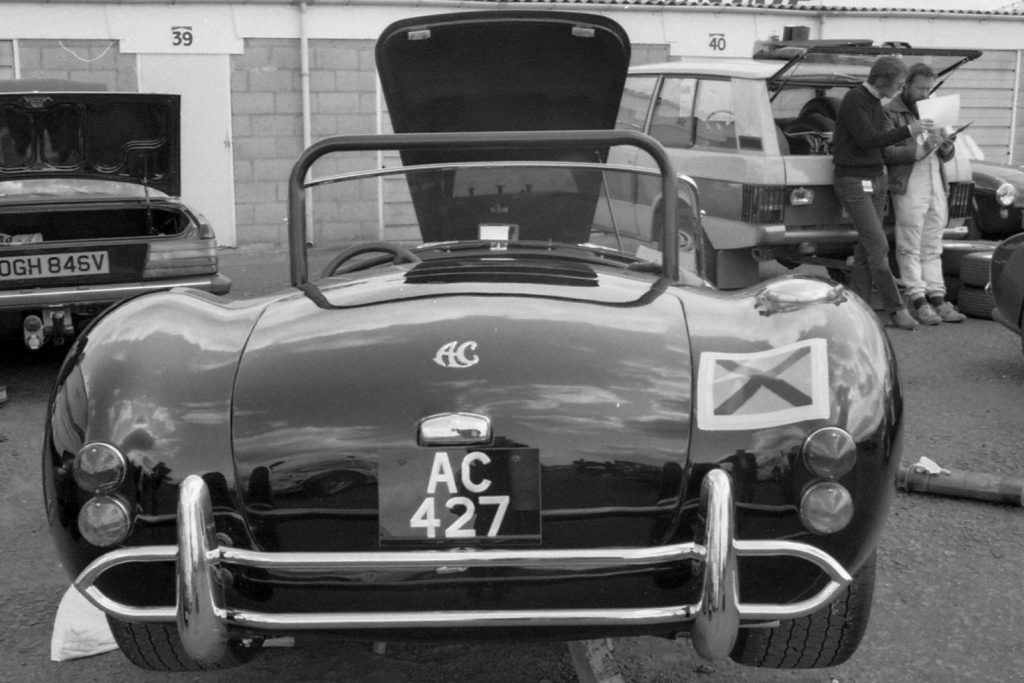
Cobra Specials, Continuations & Replicas
The Cobra must be one of the most replicated car models of all time. In addition to continuation runs by the original manufacturers, there have also been onward evolutions in the form of the Daytona Coupe and 428/Frua models, one-off specials such as COB1 and the Willment Ghia Supersonic.
In addition to that lot you have all of the independent Cobra Replica companies manufacturing cars to varying degrees of accuracy and quality.
The best thing to note however is that despite the now astronomic value of original cars, they are still enthusiastically raced in historic events and more often than not they are at the front of the grid at the start of the race and they are first over the line at the end of the race.
COB1
COB1 was a European spec AC Cobra MkIII 427 which was deemed to be “not quite powerful enough”! So to improve the “inadequate” performance of this 7 Litre beast, it was fitted with twin Garrett turbochargers and a Holley four barrel 850 cfm double pumper carburettor to lift power to 750 bhp at 7 bar turbo boost.
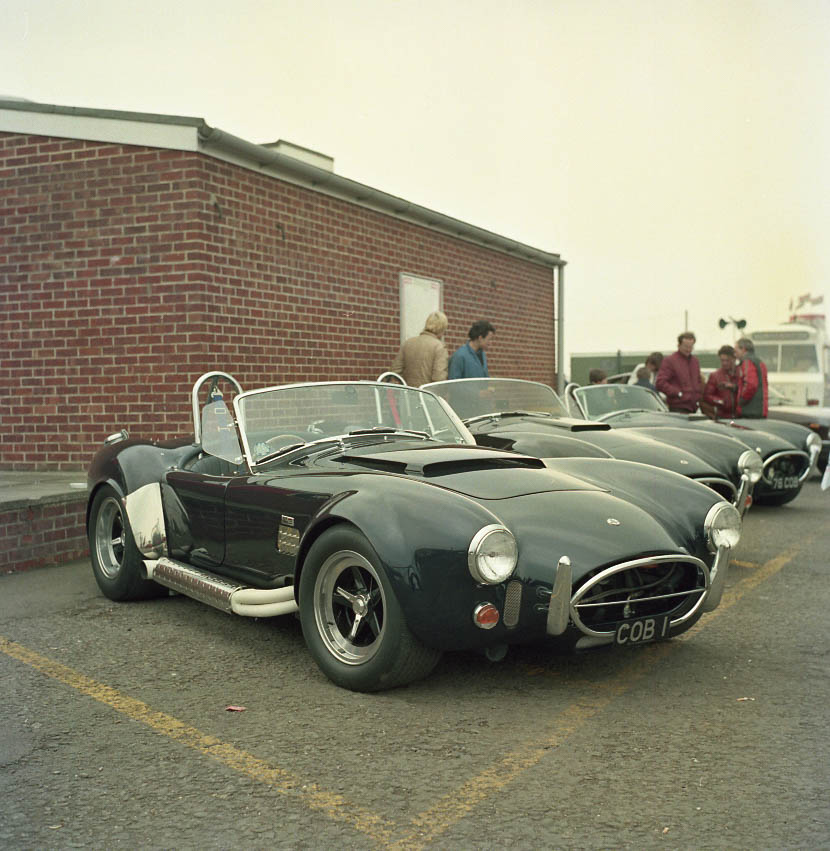
With it’s driver’s roll cage, bulbous wheel arches, wide bonnet scoop and side exhausts, COB1 almost looks like an exaggerated Cobra caricature but it was the real deal and was used extensively on public roads by its enthusiastic owners. I’ve not seen it for some time but I certainly hope its still tearing around ……… somewhere or other.
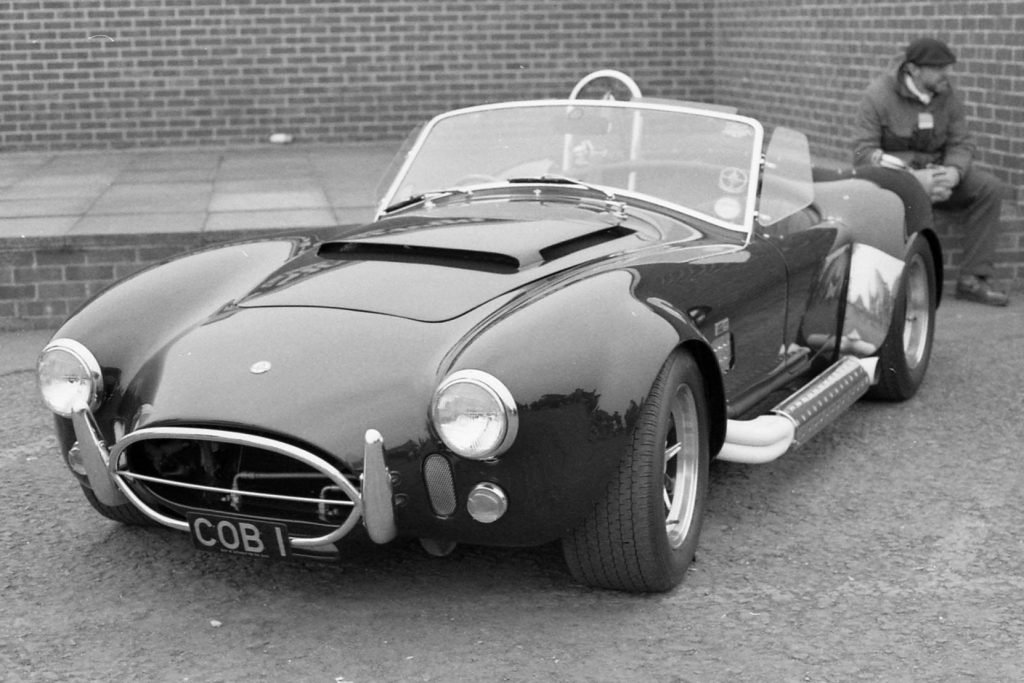
Willment Cobra
This curious car was created by John Willment, UK Ford dealer and joint owner (with John Wyer) of the JW Automotive race team. The wild bodywork was originally a one off Ghia Supersonic design by Giovanni Savonuzzi that was at some point wrapped around a Fiat 8V chassis.
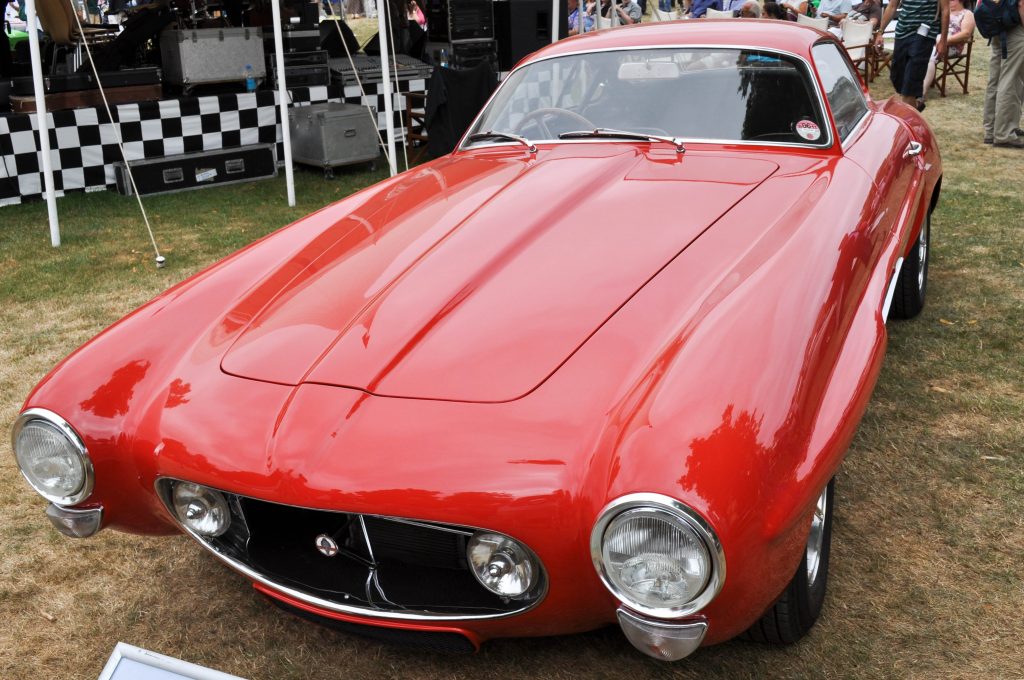
Willment just happened to have a spare racing AC Cobra 427 chassis lying around which was fitted with a highly tuned Holman & Moody V8 Ford 7 Litre engine. He claimed to have found the Ghia Supersonic aluminium body in a scrapyard and thought it would be a good idea to mate it to his Cobra chassis.
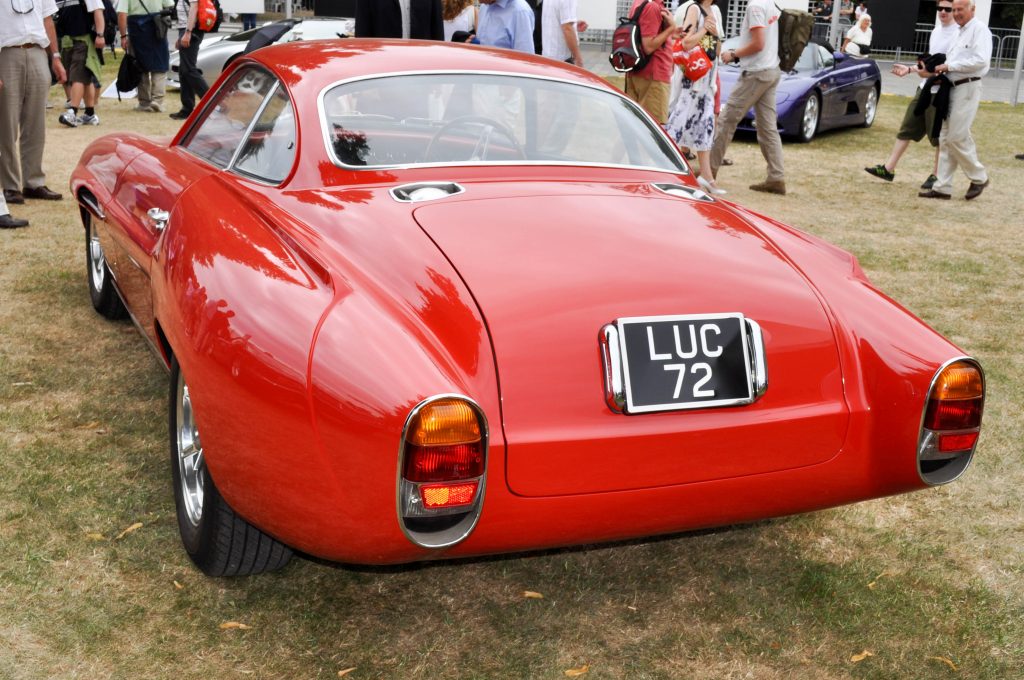
After body and chassis were successfully mated together, Willment lost interest in the car and it passed through a number of owners (including Rod Leach of Nostalgia fame), gradually being finished off and made road worthy along the way.
Motoring magazine adverts for the car in the early ’80’s claimed a top speed of 200 mph which falls quite a bit short of being truly supersonic but attempting that speed would almost certainly have resulted in the car taking flight.
Cobra Daytona Coupe
Continuous development of the Cobra for competition purposes through the use of bigger and more powerful engines eventually reached a point where brute force could no longer overcome basic aerodynamics and radical changes were required to the Cobra’s bodywork to reduce drag and to increase top speed.
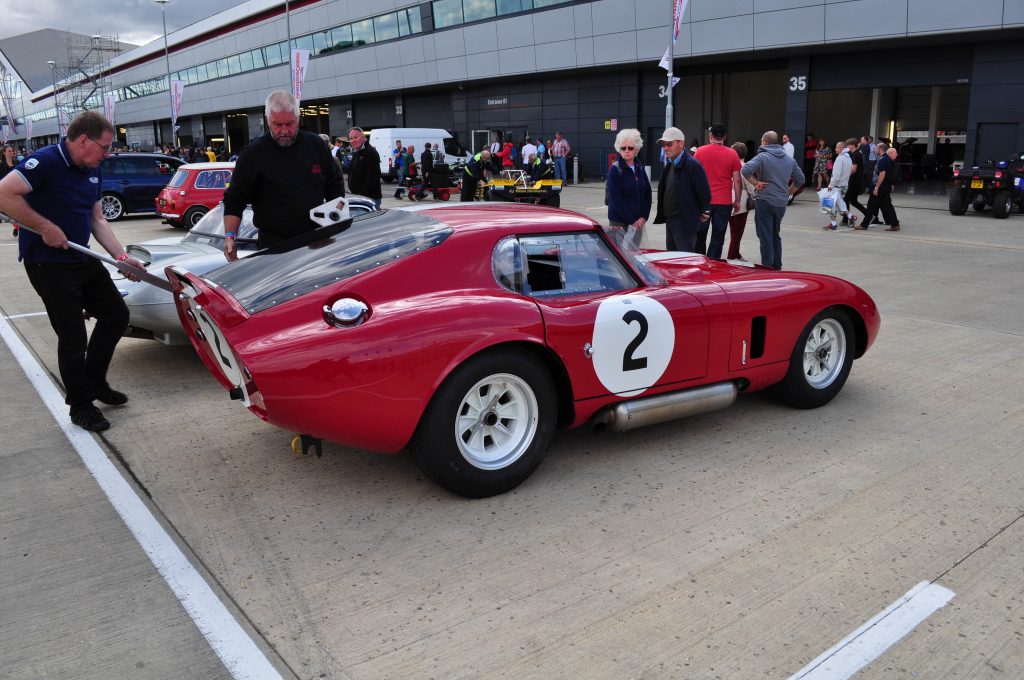
This was especially important when the Cobra was competing at high speed race tracks with really long foot-to-the-floor-and-flat-out straights such as the Mulsanne Straight at Le Mans. The speed differential between Cobras and much more slippery competition such as the Ferrari 250 GTO meant that over a long race, the Cobras lost time on every lap and were consequently just not able to keep up so an aerodynamic make-over was urgently required to extend the racing life of the Cobra.
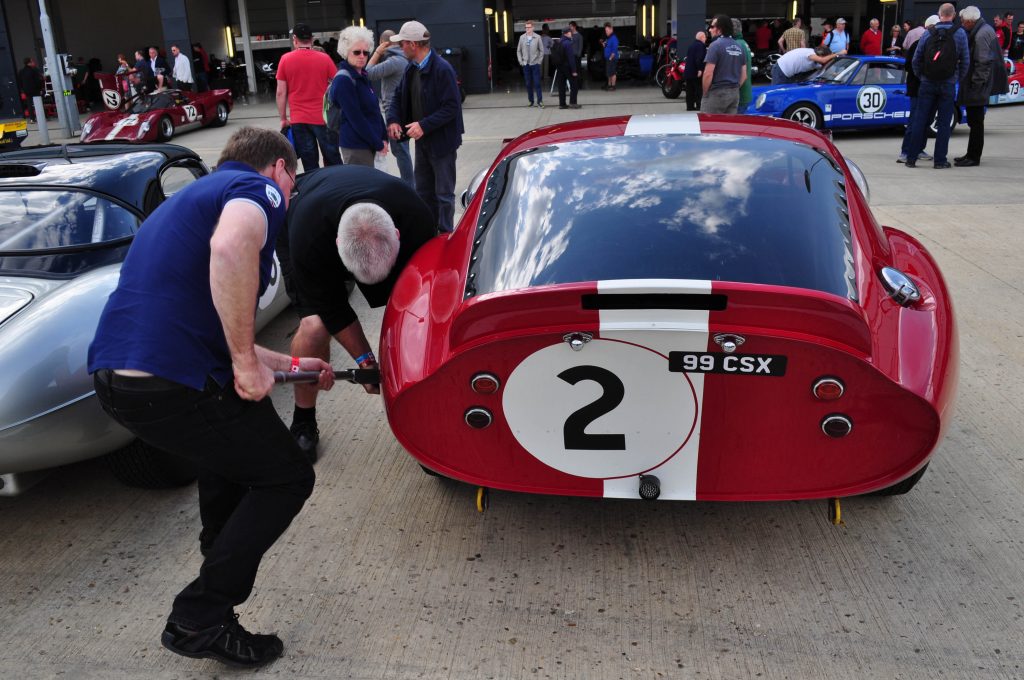
In 1964, Carroll Shelby entrusted the design and construction of the Cobra Daytona Coupe to two of his employees whilst Shelby himself shifted his attention to Ford’s GT40 project. Peter Brock was focused on the aerodynamic closed cockpit body design and Bob Negstad was focused on the car’s suspension.
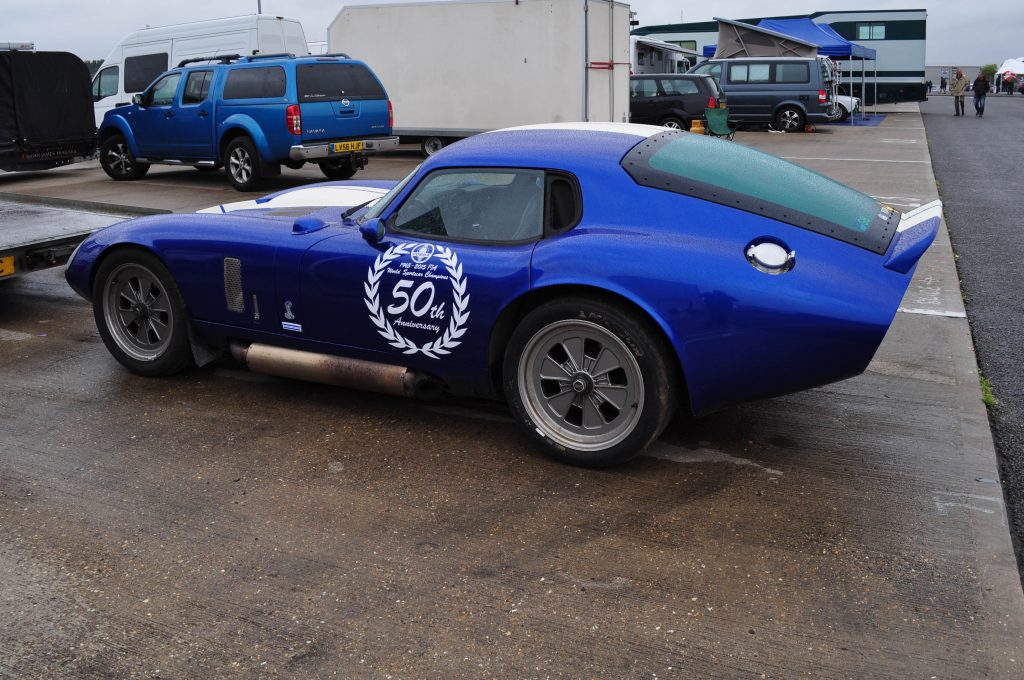
Brock’s approach to bodywork design was fairly pragmatic and basic in its execution but it ultimately proved to be effective. Eschewing the need for scale drawings, Brock sketched out his proposed design on the floor of Shelby America’s workshop, He then stripped a Cobra Roadster (that had crashed at the previous year’s Le Mans 24 hour race) down to its bare chassis in order to try out alternative placements of the seat (with and without test driver Ken Miles), steering column and steering wheel, windscreen etc. to achieve the shape and layout he had in mind (and which he’s sketched out on the workshop floor).
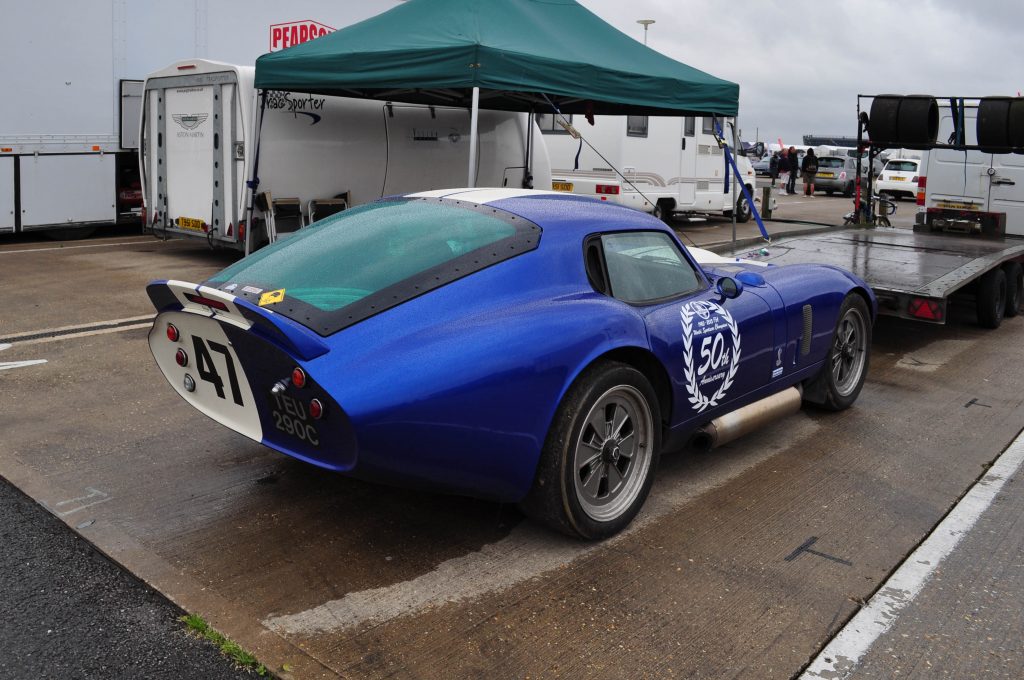
Brock then inserted shaped wooden sections transversely across the chassis at various points along its length to act as datum points for forming the closed-cockpit alloy bodywork. Some aerodynamic consultancy was sought but it was largely ignored in favour of Brock’s gut instinct of what he thought would work.
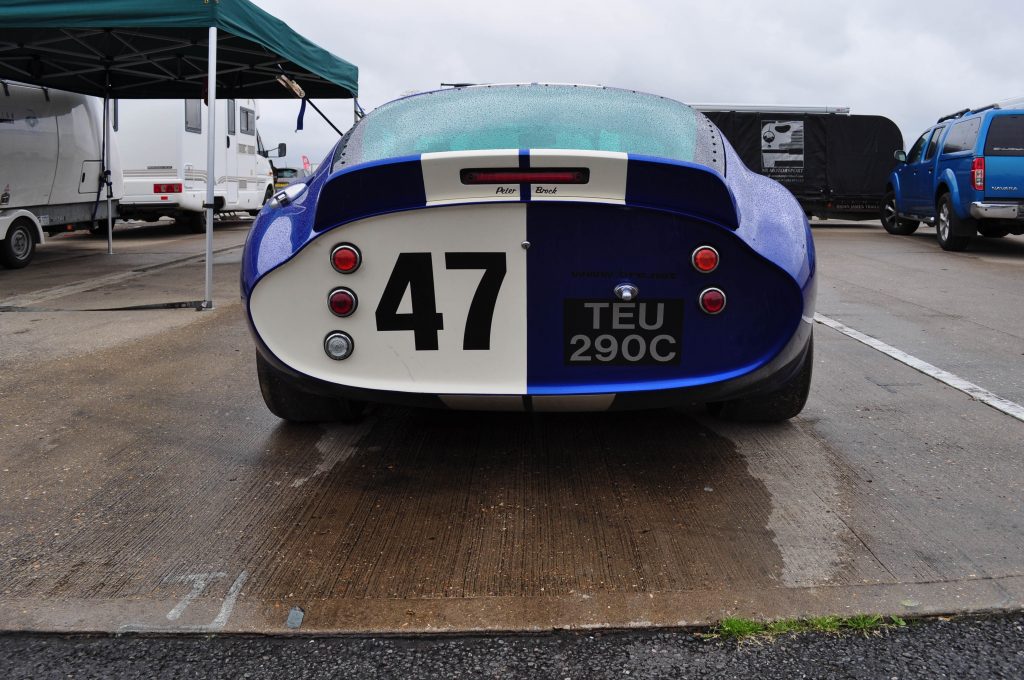
Intensive testing of the car and modifications over the course of a month ultimately resulted in a car that was capable of a top speed of 190 mph which was a significant improvement on the 157 mph maximum speed achievable in the aerodynamically compromised open-cockpit Cobra.
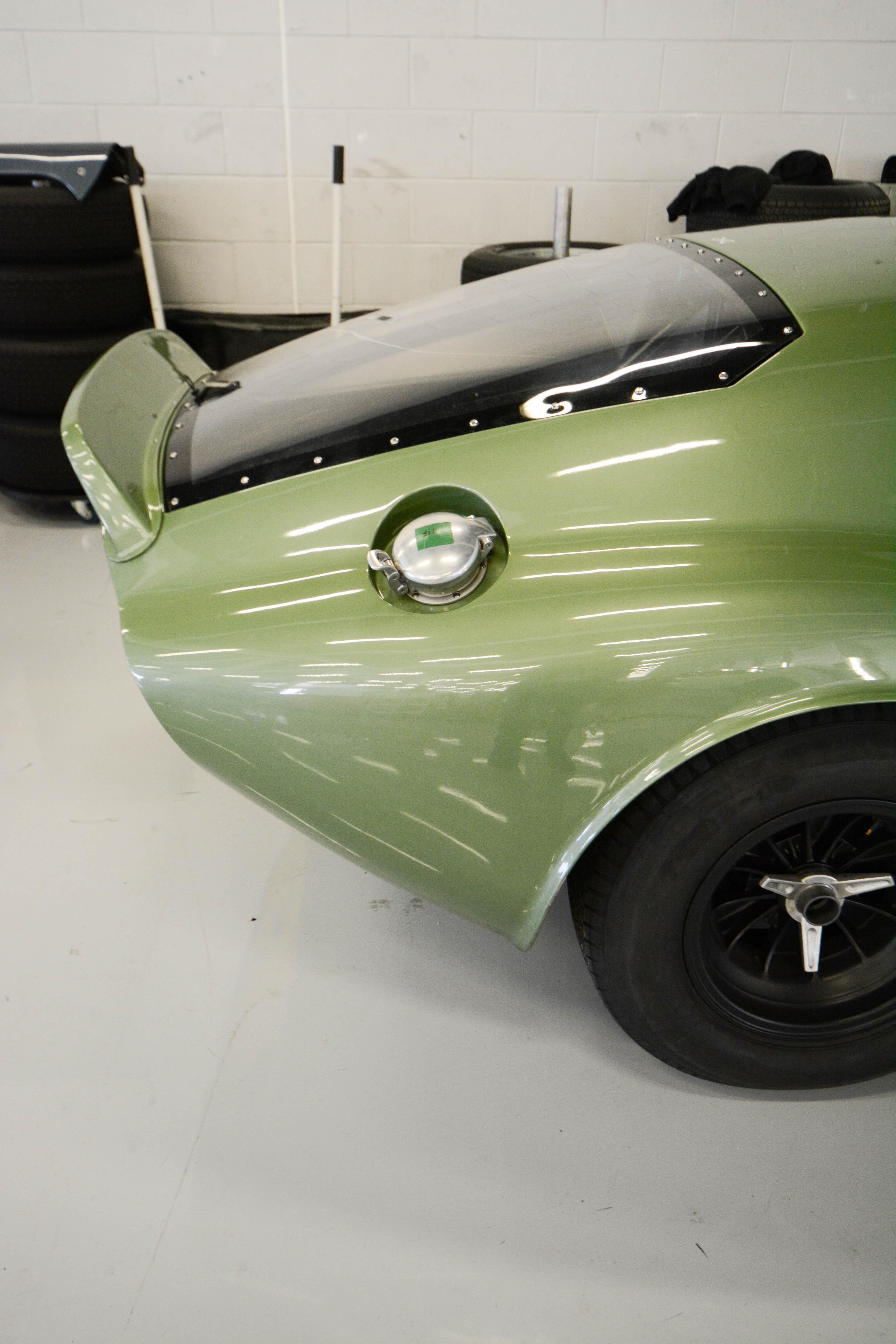
With the first of 6 Cobra Daytona Coupe’s completed, construction of the remaining 5 cars was entrusted to Carrozzeria Gransport in Modena.
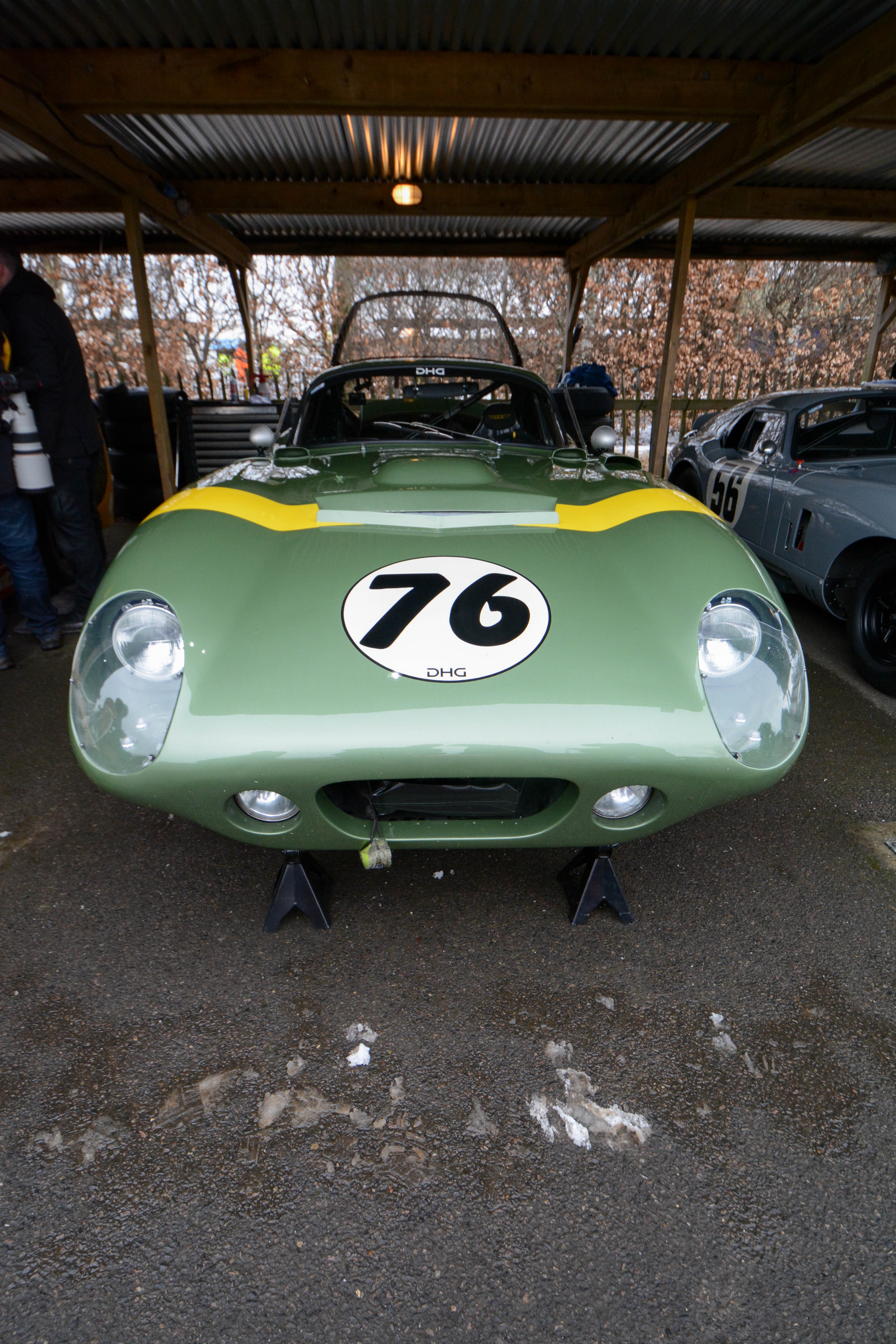
Design and construction of these cars was incredibly quick but thanks to using a proven race chassis combined with Brock’s new streamlined closed-cockpit bodywork and Negstad’s improved suspension, the cars proved to be incredibly successful and even secured an FIA World Championship for GT cars in 1965.
This enabled Shelby to achieve his long held dream of beating Ferrari at Le Mans with an American built car (in the GT class). Shelby went on to then help Ford to achieve their dream of beating Ferrari outright at Le Mans in 1966 with the Shelby American Ford GT40 MkII.
Like its Cobra Roadster progenitor, the Cobra Daytona Coupe gave rise to continuation models in the form of 50 cars to mark the 50th anniversary of the car, built by Shelby American themselves.
There have also been a number of replicas, the best of which is the Superformance Shelby Daytona Coupe built by its original designers (Peter Brock and Bob Negstad) under license from Shelby American. Cars could be ordered with a choice of Roush built engines of varying capacities and the option of 5 or 6-speed transmission.
The AC 428
In the same way that the Cobra Daytona Coupe was a development to extend the competitive life of the Cobra, the AC 428 or AC Frua was an attempt by AC Cars to create a sophisticated GT sports car evolution of the Cobra chassis and drive train by clothing it in fabulously beautiful Italian coachwork.
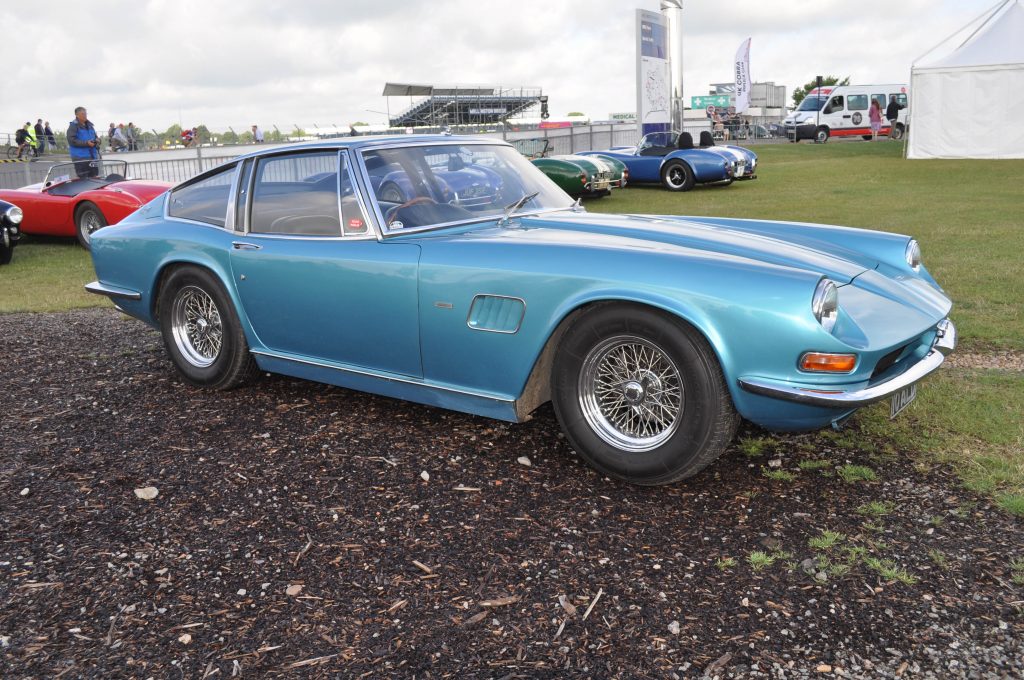
Only 81 examples of this car were built between 1965 and 1973 with most of them (49) in coupe or fastback from plus a further 29 convertibles and the remaining 3 clad in custom bodywork. All cars had Cobra 427 underpinnings but the wheelbase of the chassis was extended by 6 inches.
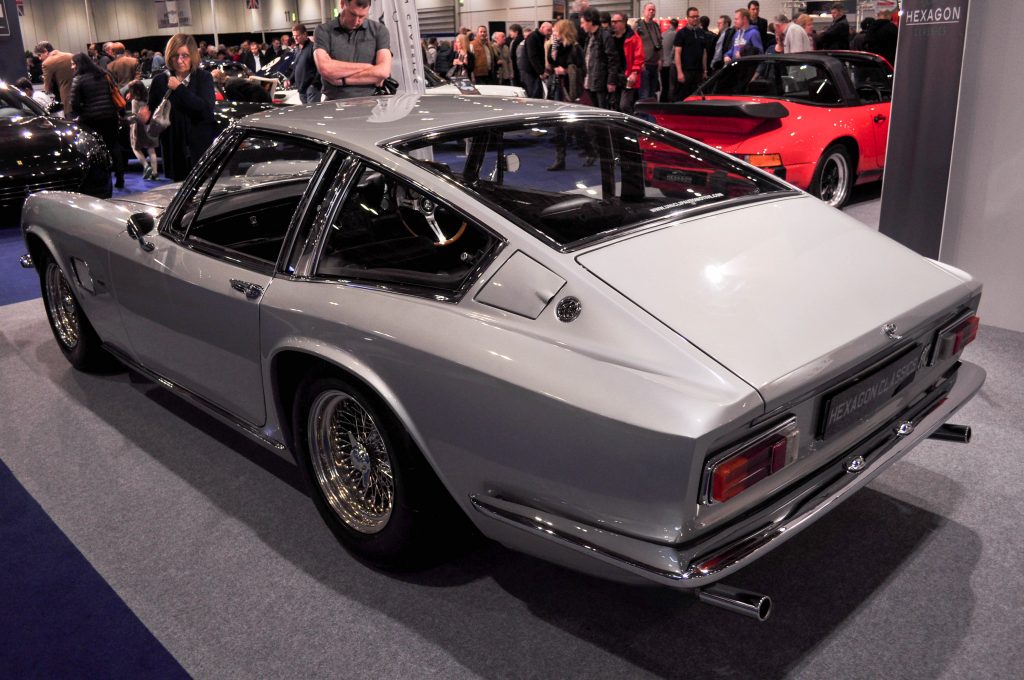
The fact that these were incredibly powerful race cars wrapped in elegant and luxurious bodywork and trim was the undoing of the model for AC. They were very expensive to make with chassis manufacture starting in Thames Ditton, bodywork mated to the chassis in Turin and final assembly including engine, transmission and trim back in Thames Ditton.
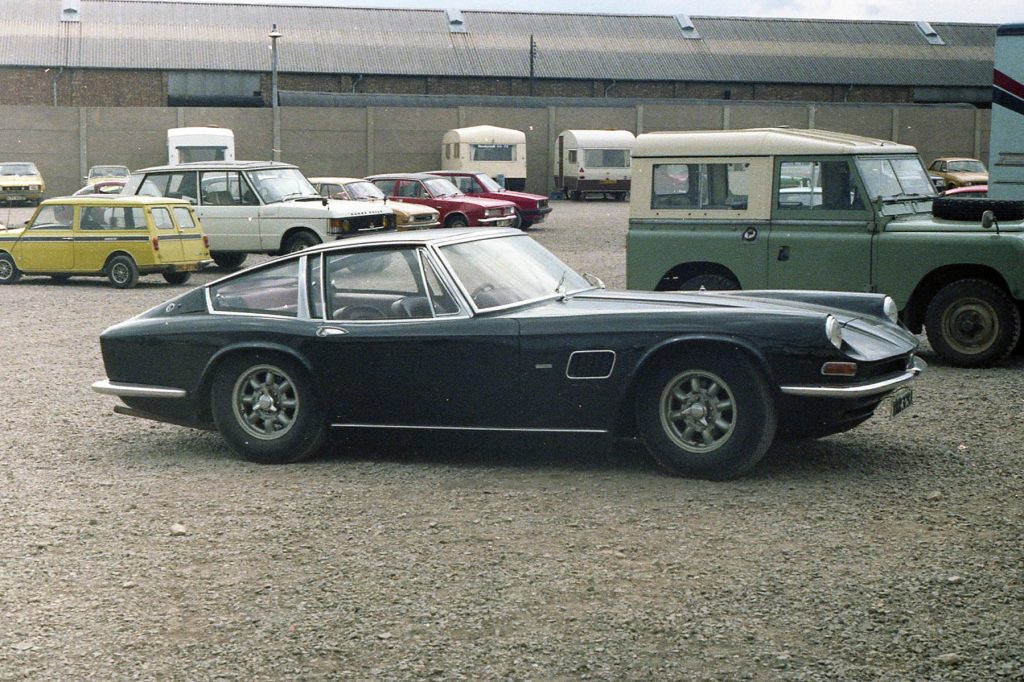
Carrozzeria Frua in Turin were responsible for the bodywork design which in some respect looks like a scaled-up version of their design for the Maserati Mistral. It’s worth noting that Pietro Frua’s automotive design apprenticeship started at the age of 17 at Farina where he worked with the likes of Giovanni Michelotti.
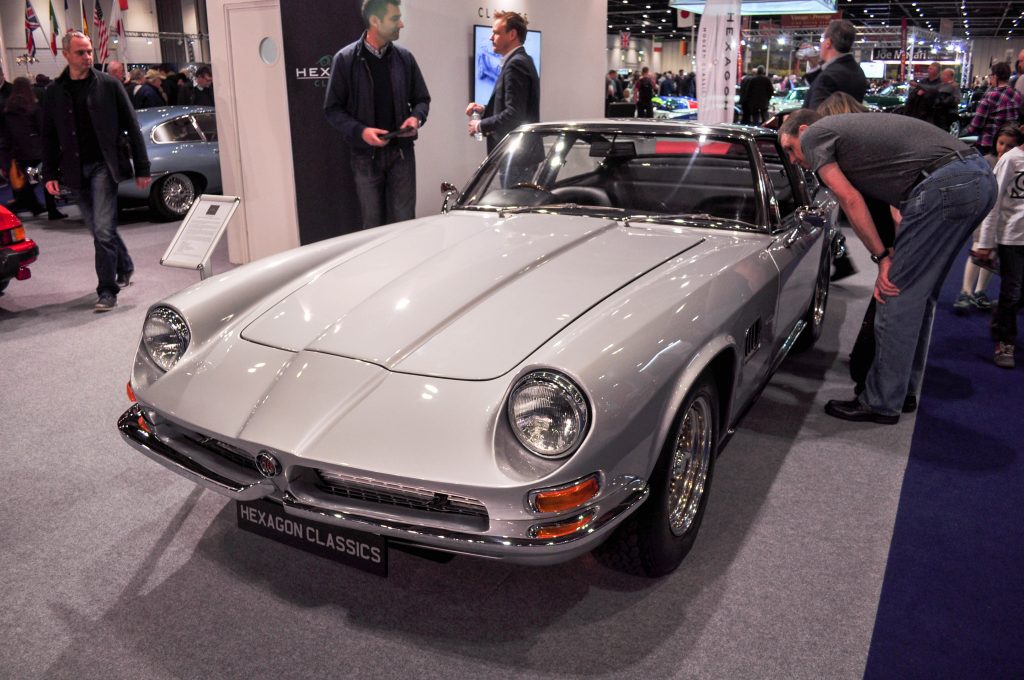
Digression alert!!! Michelotti was most famous for his prolific output of iconic designs for Ferrari, Maserati, Alfa Romeo and Lancia but in the UK he was famous for his designs for Triumph including the Herald/Vitesse, Spitfire, GT6, 1300, 2000, TR4, TR5, Dolomite and Stag.
It’s a real shame that the AC 428 never fully took off as it was far more powerful the contemporary competition and it benefitted from a race bred chassis/suspension set-up when compared to other high-end sports cars of the period. Unfortunately, this competition included other Euro/US (Euro chassis/US engine) creations from Montiverdi, ISO and Bizzarrini as well as more in-hous creations from well established Italian manufacturers such as Maserati, Ferrari and Lamborghini.
See A to Z of Car Stuff: H is for Hybrids (the Euro/US Variety!).
Information Sources
Cobra – The First 40 Years by Trevor Legate. Published by Touchstone Books Ltd . ISBN: 0-9551020-0-6
- A great book with a forward written by Jack Sears.
- It provides fascinating insight into AC as a company and it’s adoption in 1953 of the Tojeiro Bristol Special design as what would be marketed as the AC Ace.
- It also describes Carrol Shelby’s transformation of the Ace into the fire breathing Cobra to the delight and enjoyment of club racers on both sides of the Atlantic.
- A good read, nice photographs and a wealth of information for Cobra-nerds.
Toj – John Tojeiro And His Cars by Graham Gauld. Published by Havelock Publishing . ISBN: 0-9549167-1-9
- A great book with a forward written by Brian Lister.
- It tackles the challenging problem of documenting all of Tojeiro’s automotive creations
- A poignant account of a supremely talented self-taught engineer who’s influence on automative design was as enormous as it was underrated.
